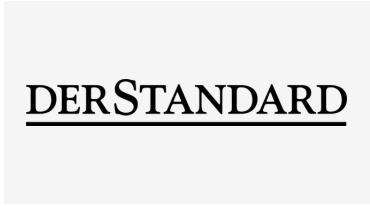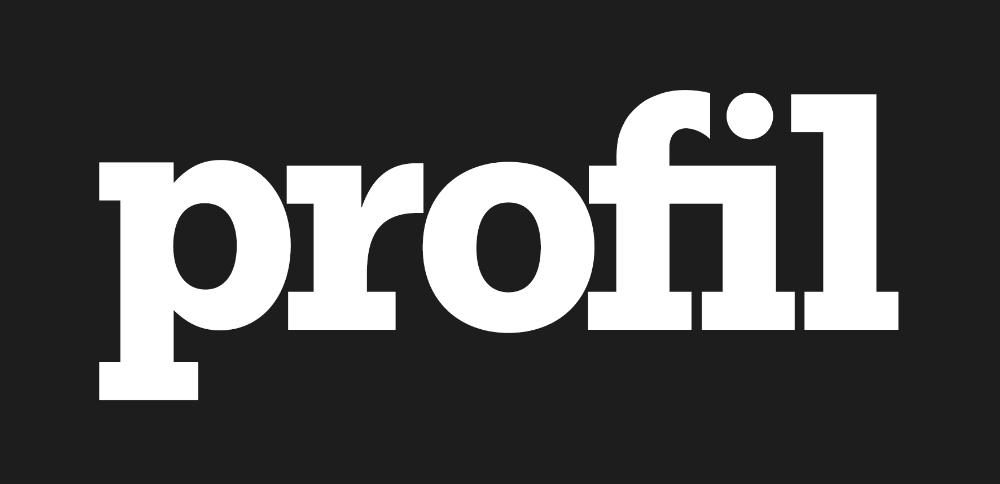Systems of BeliefJordan Belson, Harm van den Dorpel, Storm de Hirsch, Antonia De La Luz Kašik, Richard Kriesche, Paul Laffoley, Irina Lotarevich, Lee Scratch Perry, Marta Riniker-Radich25.9.2022–8.1.2023
Exhibition
The large-scale group exhibition Systems of Belief brings together artistic positions that explore alternative belief systems. In a world in which political and ecological states of emergency determine everyday life, constants of social life such as science, economics and politics are increasingly being put to the test in public debates. As individuals, as a society and as an entire ecosystem, we are currently facing great challenges. Challenging, even overwhelming, is often the subjective processing of the complex world events that flow into us through various streams of information and shape our view of the present.
In the parallel program of steirischer herbst 2022
Views
Systems of Belief, 2022
Exhibition Tour (English)
Camera & Sound: kunst-dokumentation.com
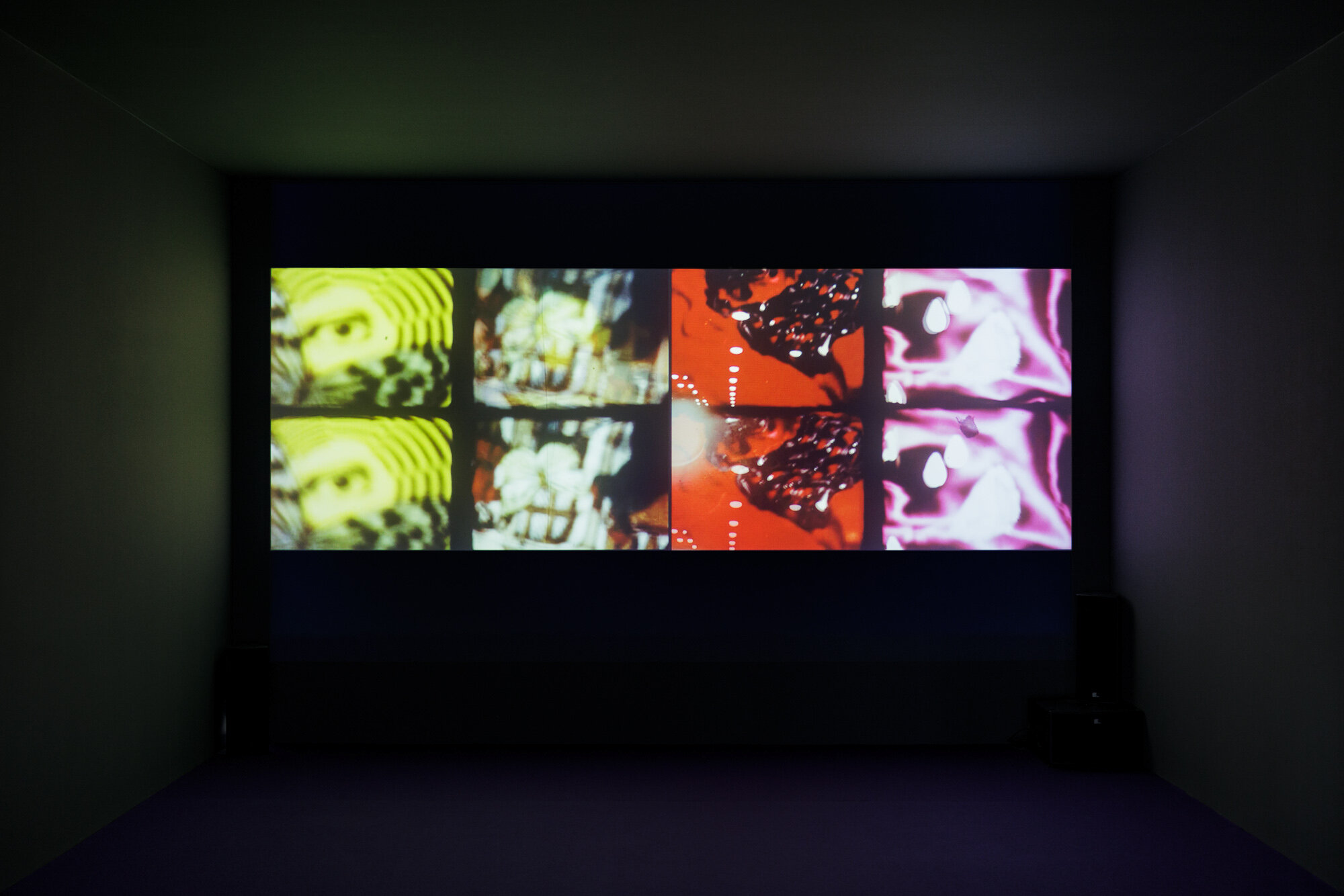
Storm de Hirsch, THIRD EYE BUTTERFLY, 1964
16mm film, digitalized, color, sound
10 min.
Film still
Courtesy The New American Cinema Group, Inc./ The Film-Maker’s Cooperative, New York
Photo: kunst-dokumentation.com
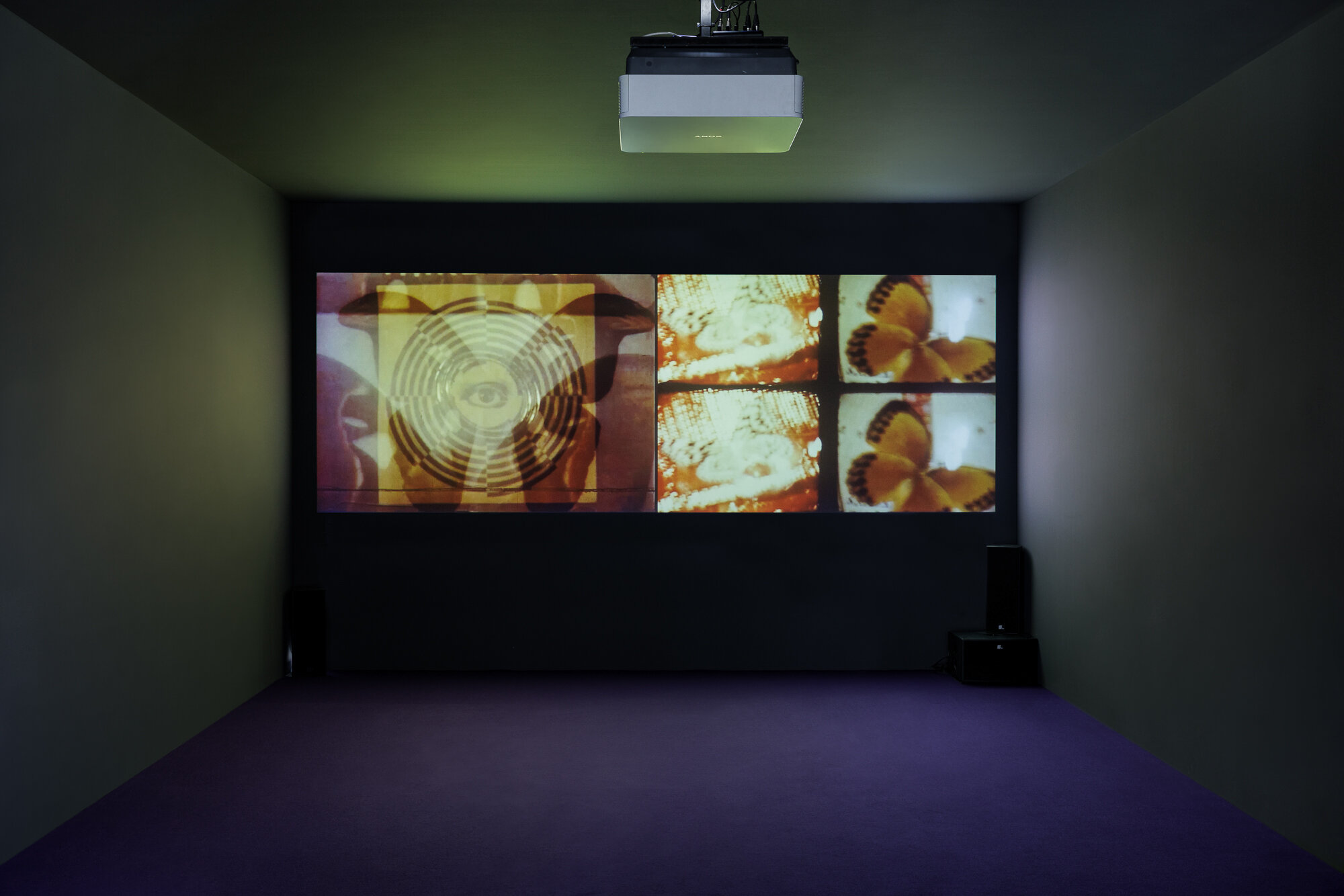
Storm de Hirsch, THIRD EYE BUTTERFLY, 1964
16mm film, digitalized, color, sound
10 min.
Film still
Courtesy The New American Cinema Group, Inc./ The Film-Maker’s Cooperative, New York
Photo: kunst-dokumentation.com
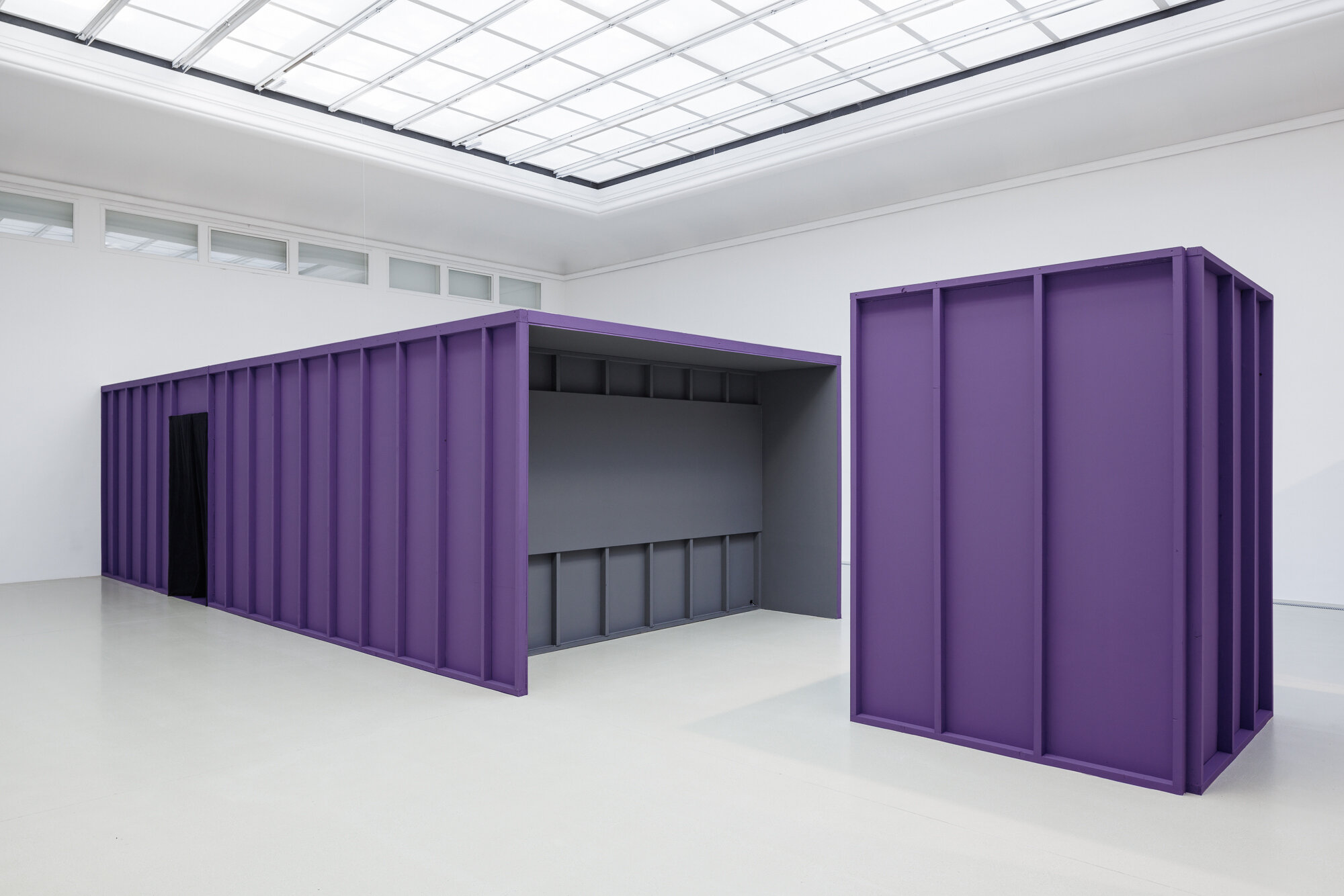
Systems of Belief, 2022
Exhibition view
Photo: kunst-dokumentation.com
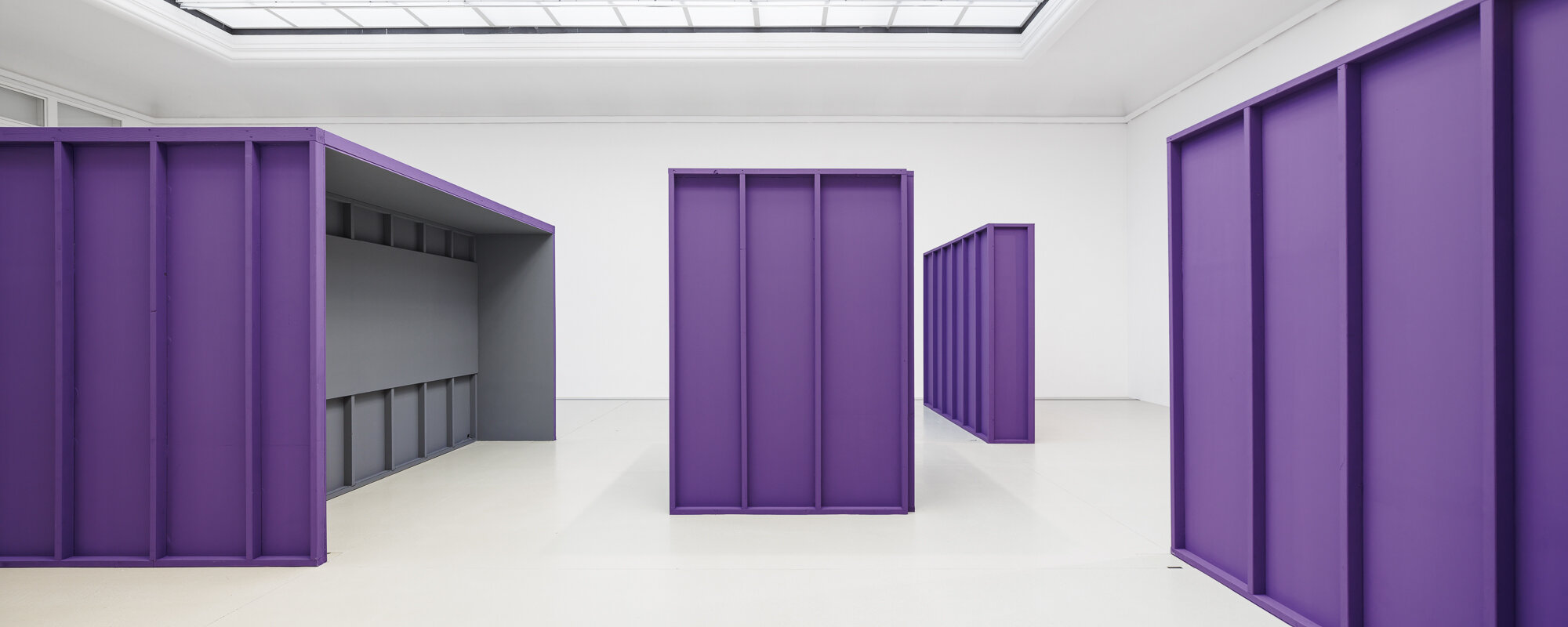
Systems of Belief, 2022
Exhibition view
Photo: kunst-dokumentation.com
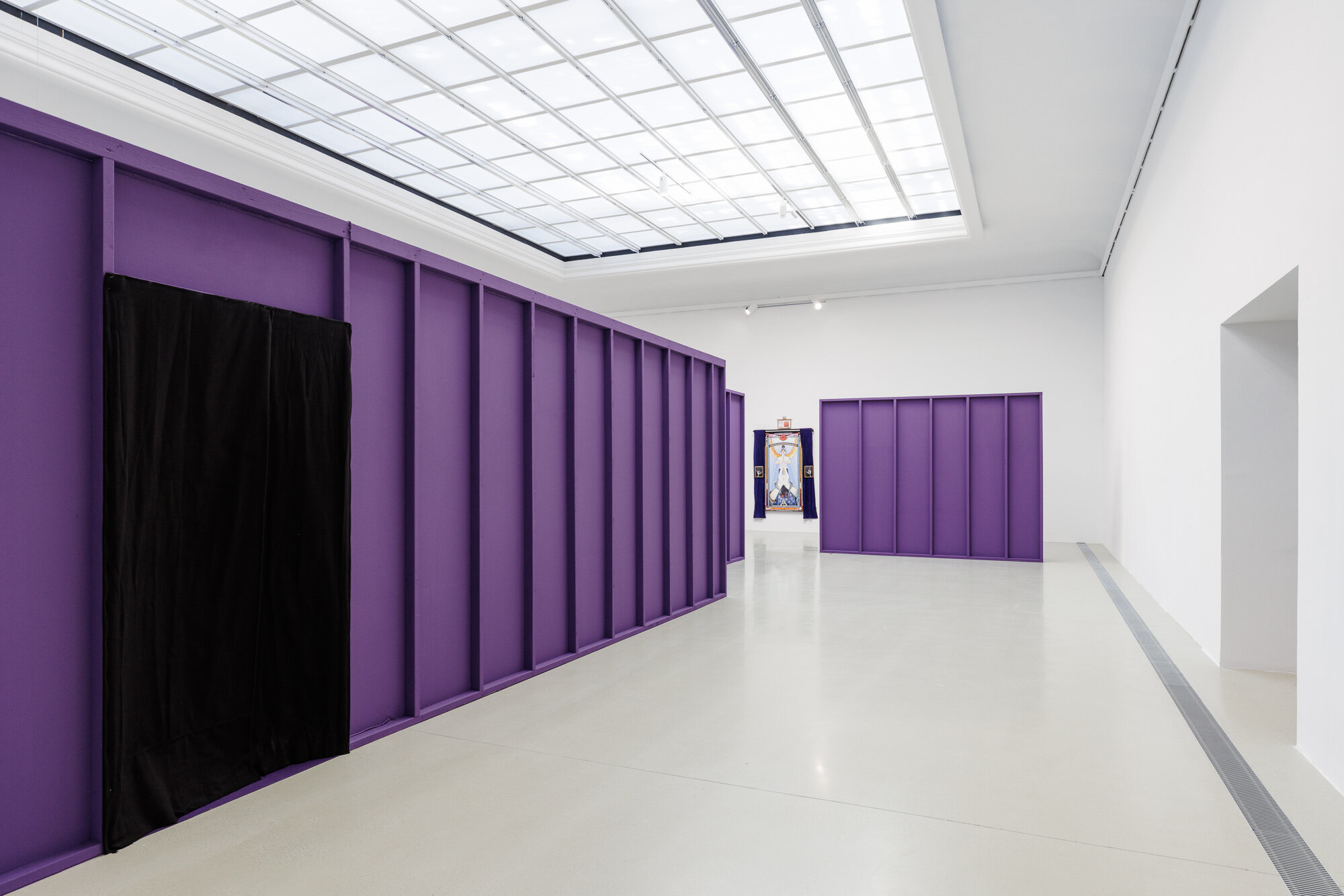
Systems of Belief, 2022
Exhibition view
Photo: kunst-dokumentation.com
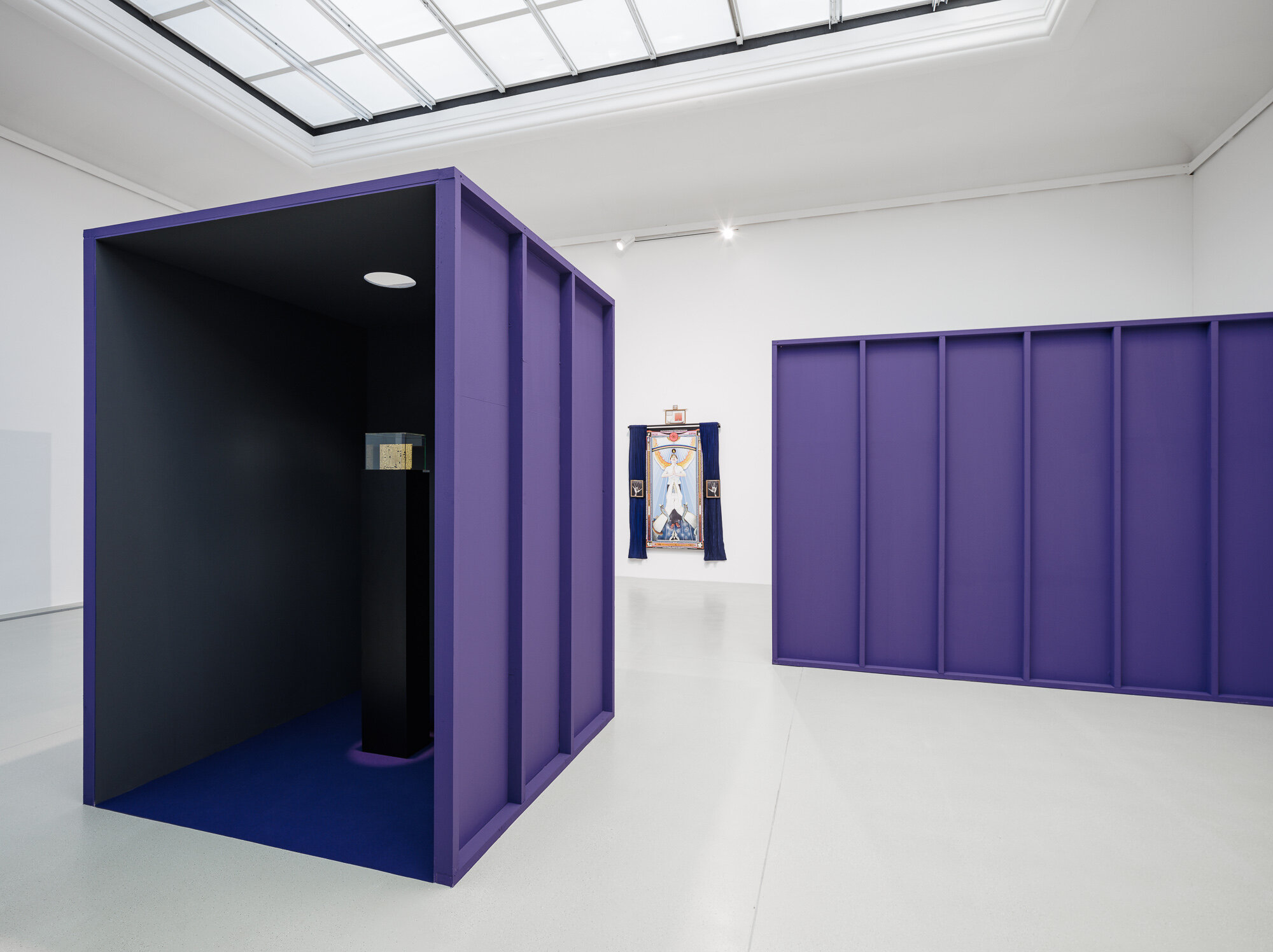
Systems of Belief, 2022
Exhibition view
Photo: Foto: kunst-dokumentation.com
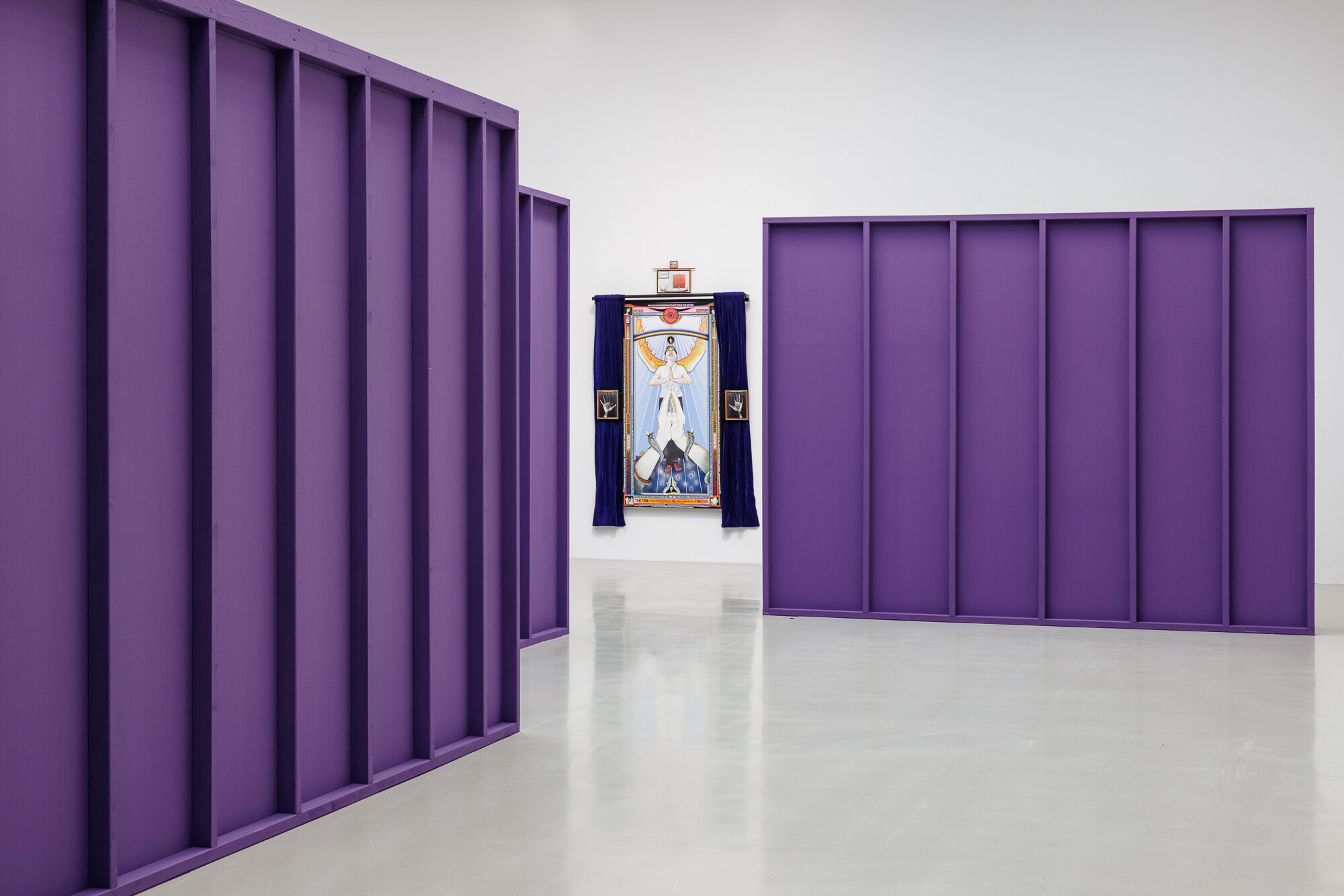
Paul Laffoley, Pistis Sophia, 2004 – 2006
Oil an acrylic paint, vinyl press type, India ink, photo-collage on linen canvas with velvet drapes and magic mirror
264 x 151, 8 x 16,5 cm
Courtesy KENT FINE ART, Ridgewood, New Jersey
Photo: kunst-dokumentation.com

Paul Laffoley, Pistis Sophia, 2004 – 2006
Oil an acrylic paint, vinyl press type, India ink, photo-collage on linen canvas with velvet drapes and magic mirror
264 x 151, 8 x 16,5 cm
Courtesy KENT FINE ART, Ridgewood, New Jersey
Photo: kunst-dokumentation.com
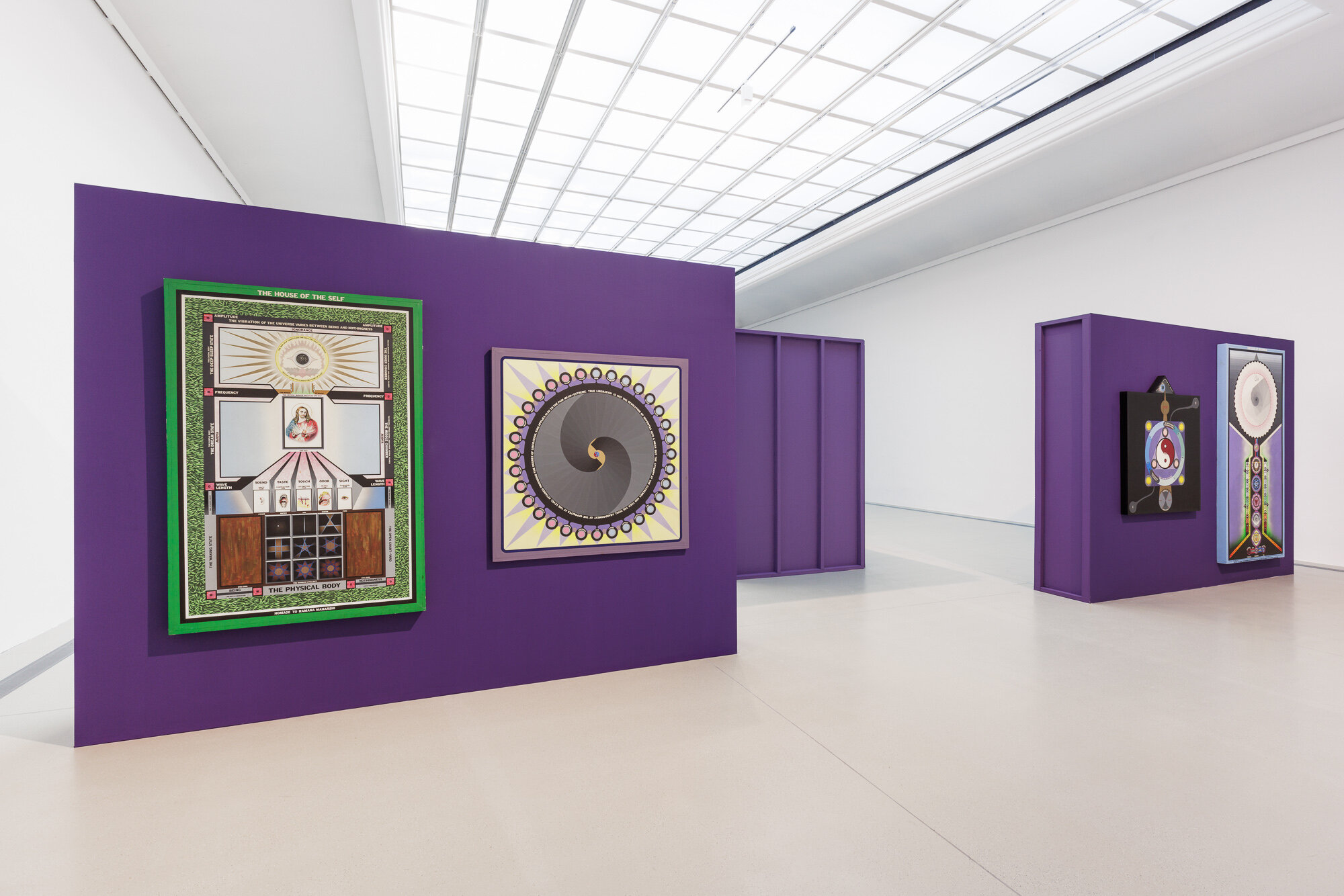
Systems of Belief, 2022
Exhibition view
Photo: kunst-dokumentation.com
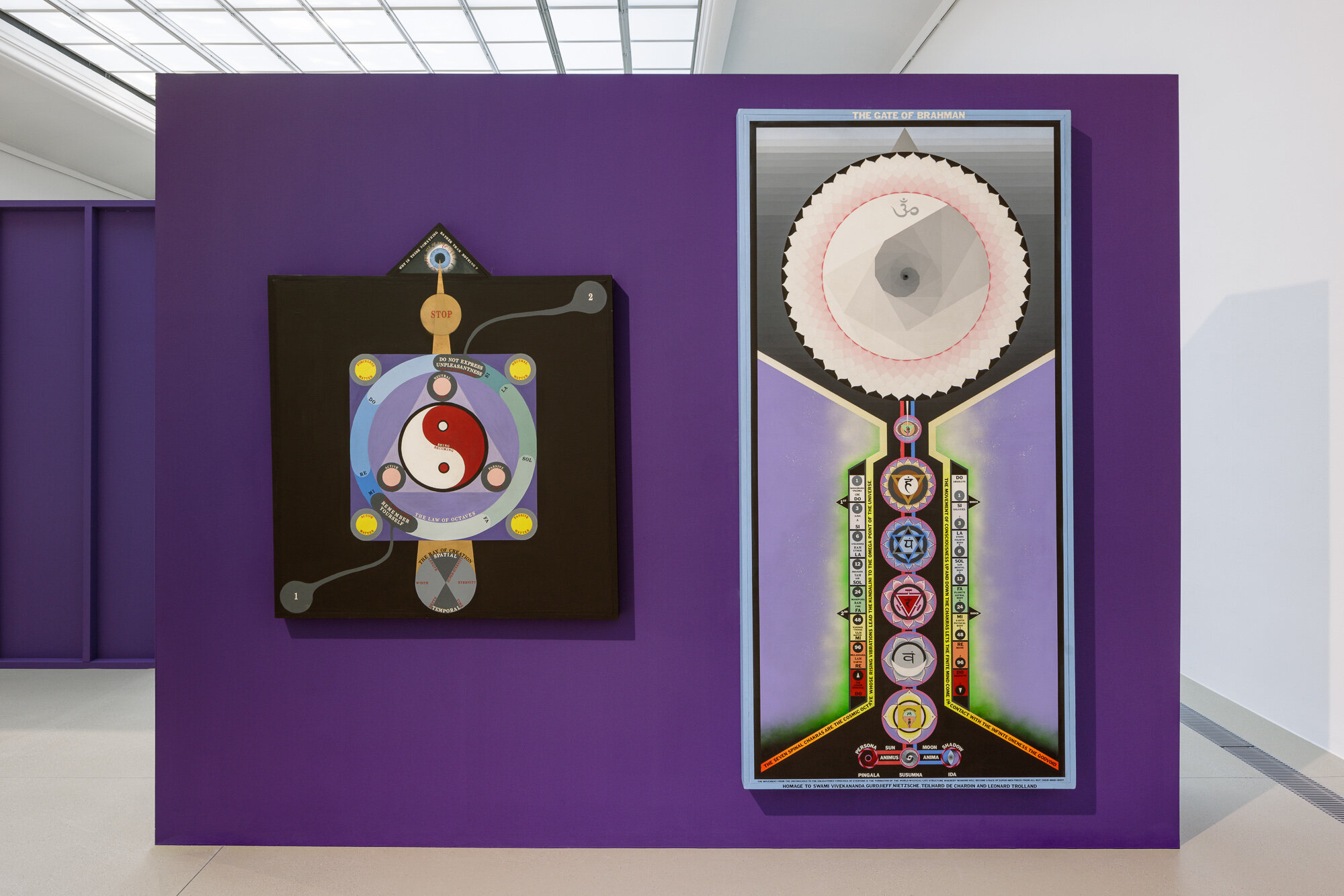
Systems of Belief, 2022
Exhibition view
Photo: kunst-dokumentation.com
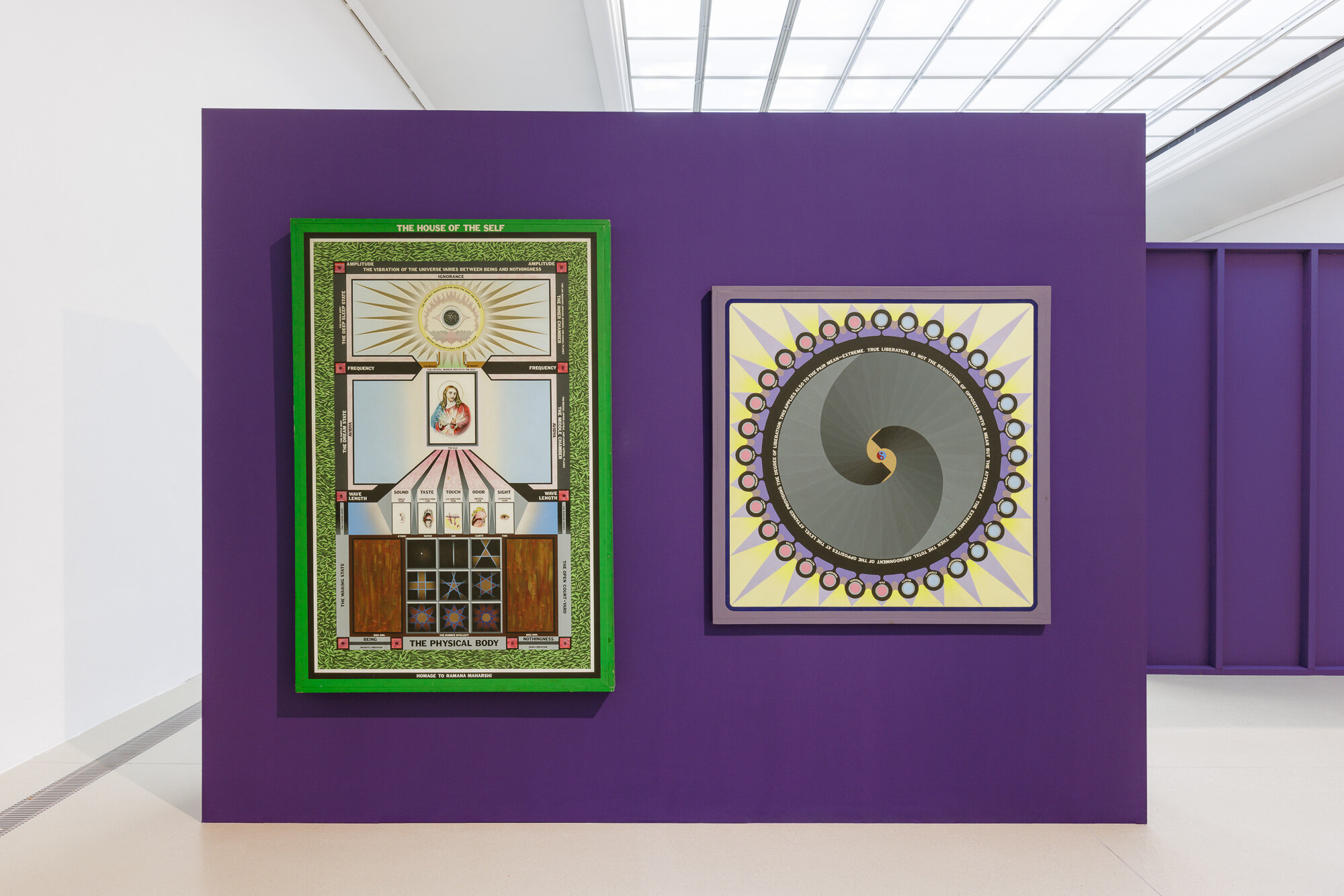
Systems of Belief, 2022
Exhibition view
Photo: kunst-dokumentation.com
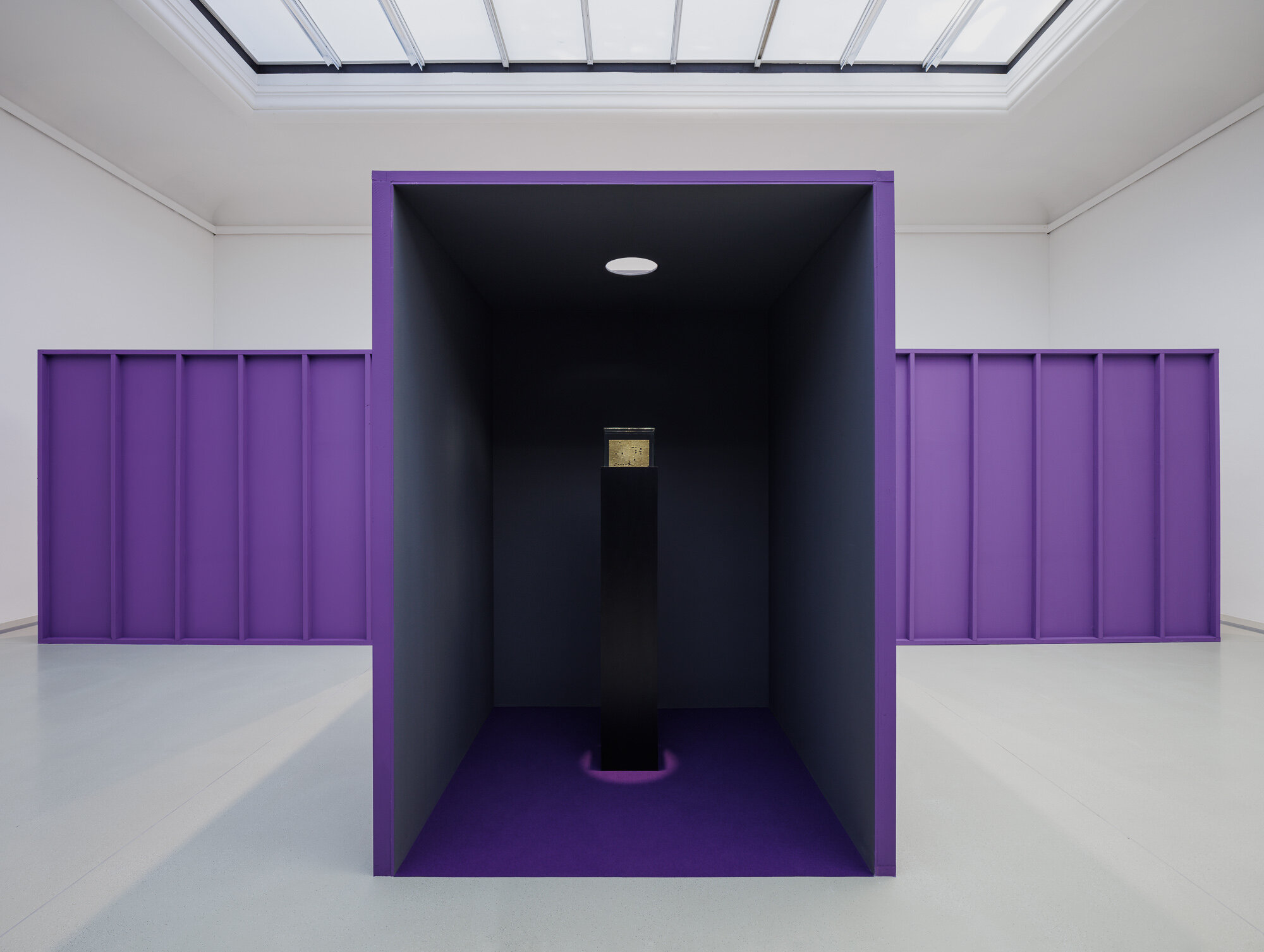
Richard Kriesche, Artsat-Space Message Sculpture, 1991
Gold, acrylic glass, veneered wooden construction
22,5 x 31 x 190 cm
Courtesy the artist
Photo: kunst-dokumentation.com
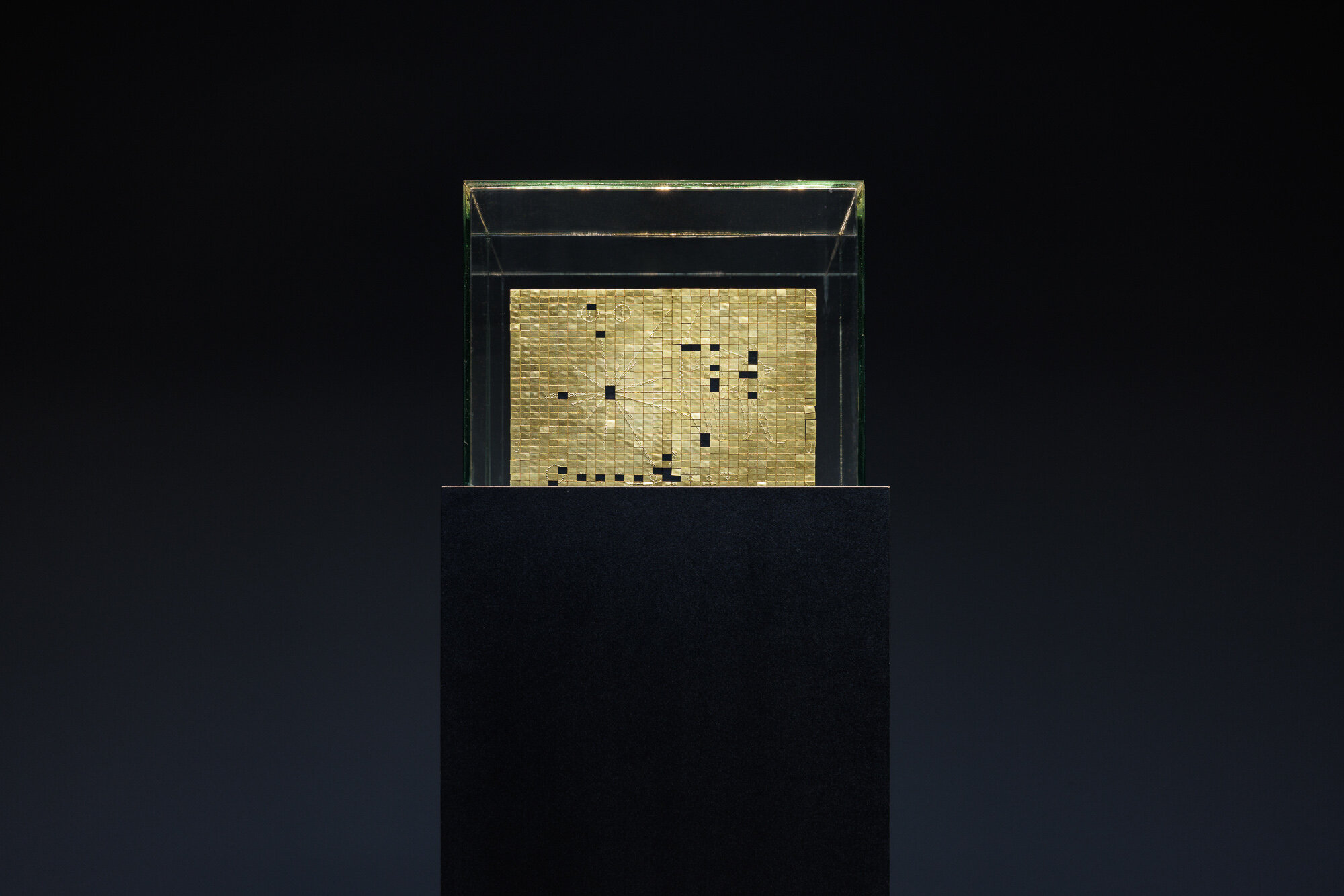
Richard Kriesche, Artsat-Space Message Sculpture, 1991
Gold, acrylic glass, veneered wooden construction
22,5 x 31 x 190 cm
Courtesy the artist
Photo: kunst-dokumentation.com
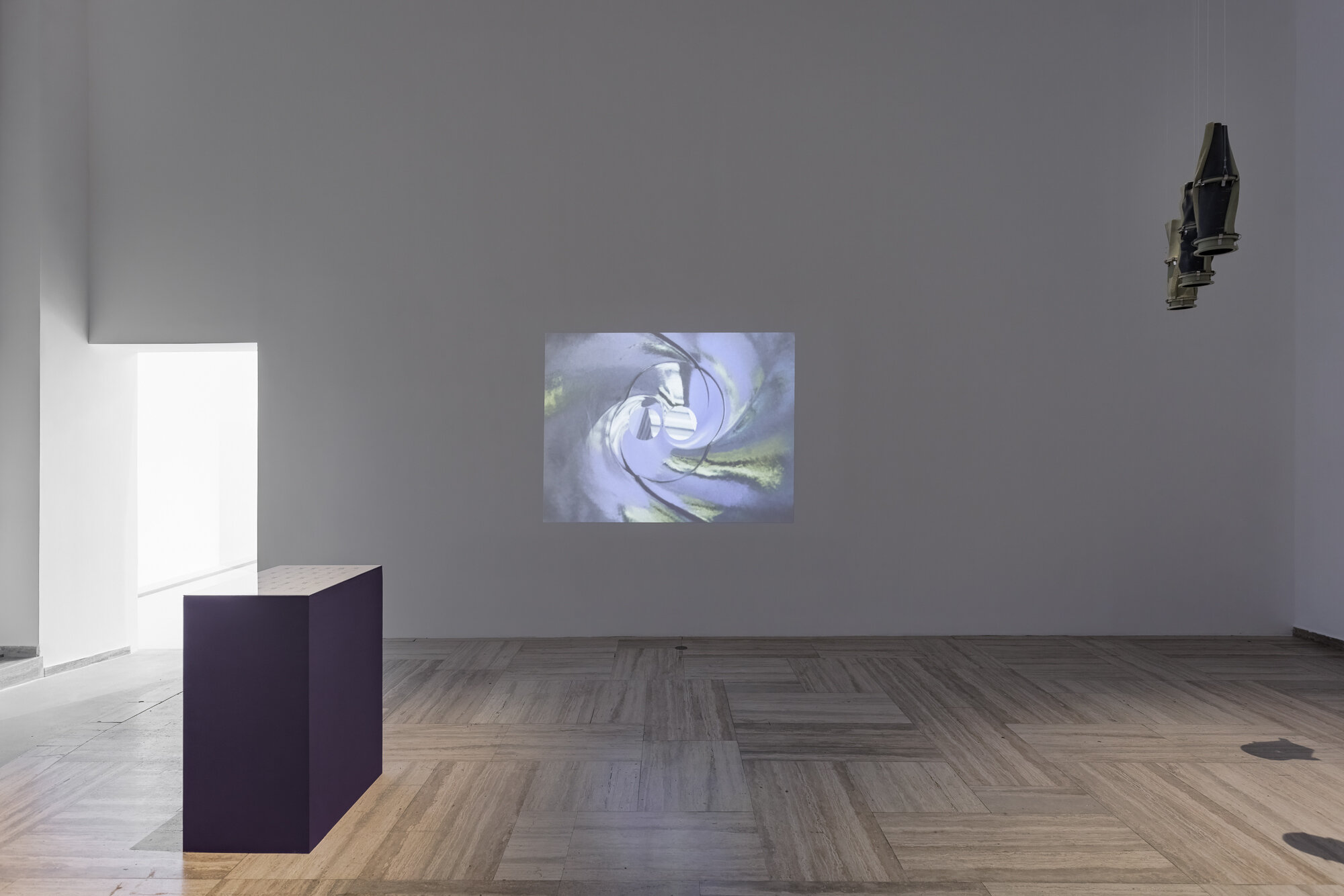
Antonia De La Luz Kašik, Zyklop (1−7), 2022
with Andi Gruber,
16 mm film, digitized, 7 min.;
silkscreen Teleidoskop (1−30), 70 x 50 cm;
optical devices partly mirrored, each 12 x 12 x 42 cm
Courtesy the artist
Photo: kunst-dokumentation.com
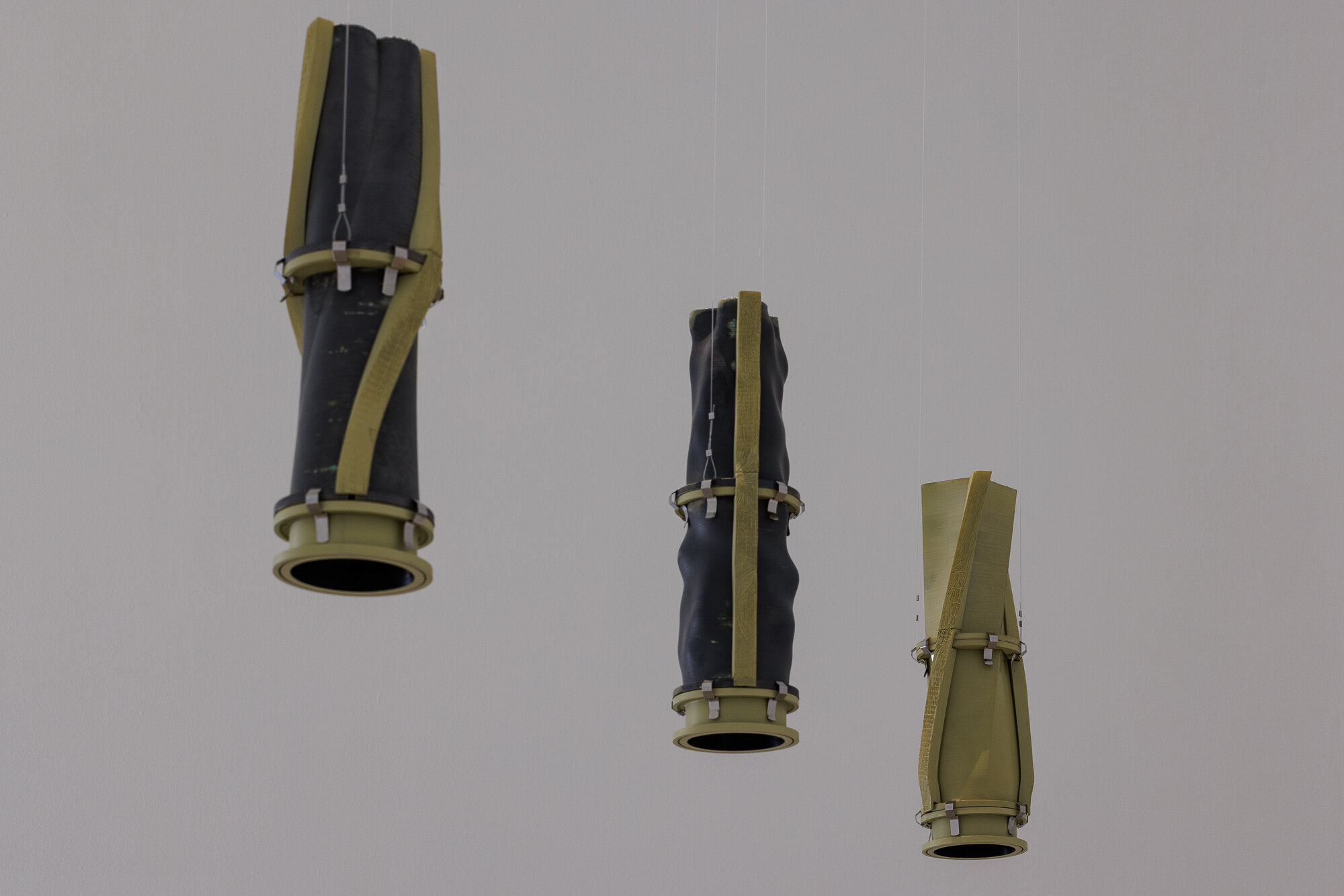
Antonia De La Luz Kašik, Zyklop (1−7) (detail), 2022
with Andi Gruber,
16 mm film, digitized, 7 min.;
silkscreen Teleidoskop (1−30), 70 x 50 cm;
optical devices partly mirrored, each 12 x 12 x 42 cm
Courtesy the artist
Photo: kunst-dokumentation.com
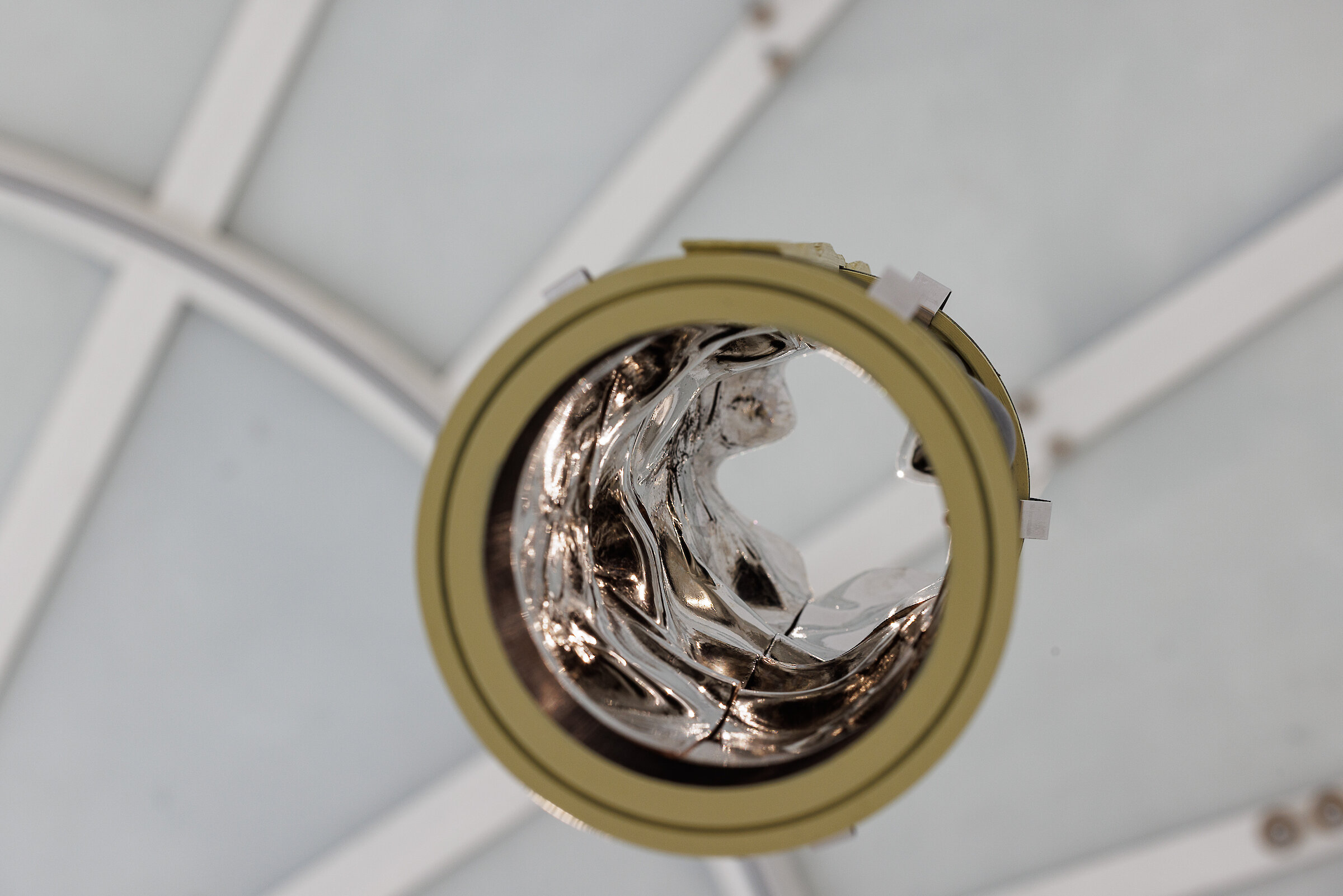
Antonia De La Luz Kašik, Zyklop (1−7) (Detail), 2022
with Andi Gruber,
16 mm film, digitized, 7 min.;
silkscreen Teleidoskop (1−30), 70 x 50 cm;
optical devices partly mirrored, each 12 x 12 x 42 cm
Courtesy the artist
Photo: kunst-dokumentation.com
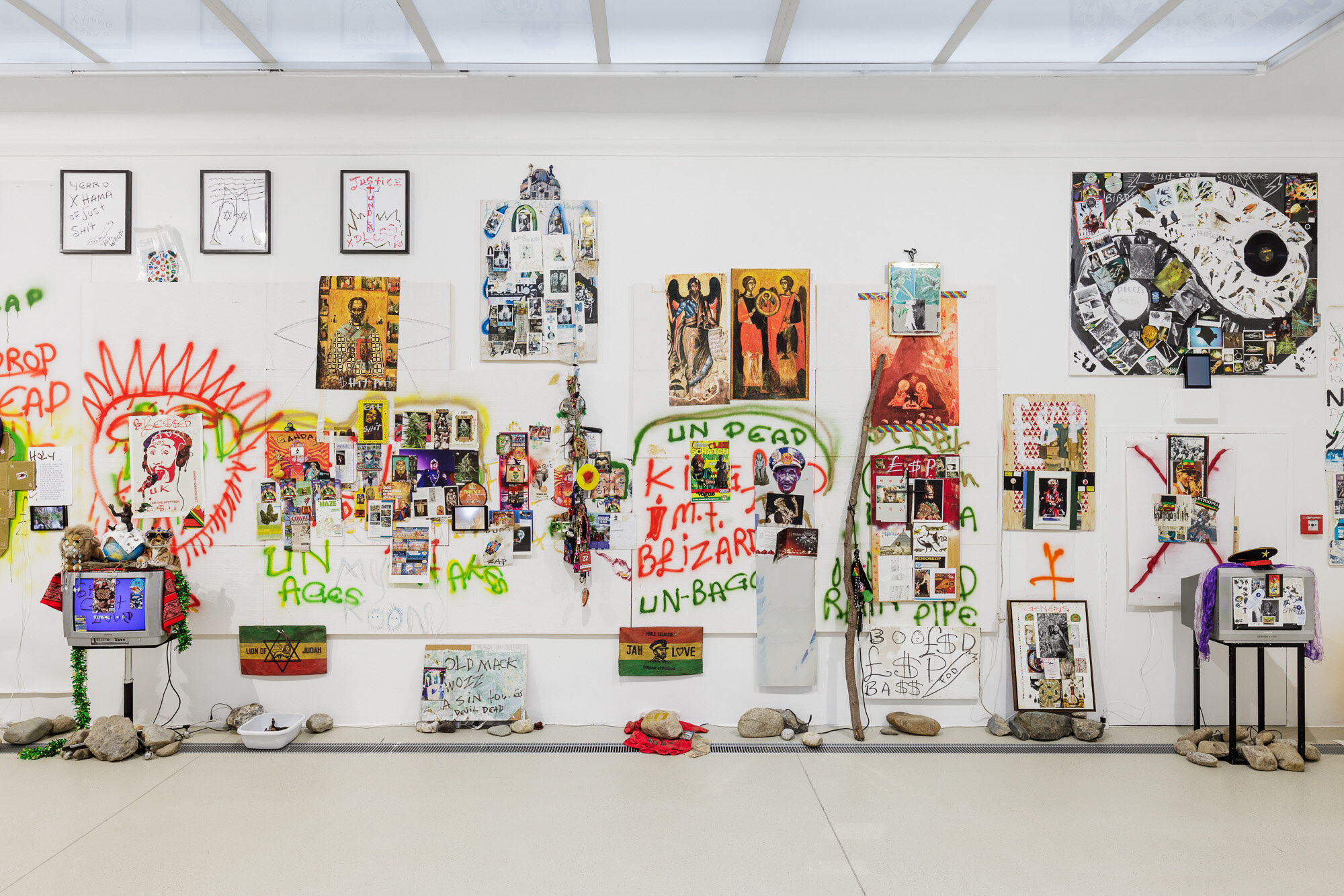
Lee Scratch Perry, 2022
Exhibition view
All works courtesy The Visual Estate of Lee Scratch Perry / suns.works, Zurich
Photo: kunst.dokumentation.com
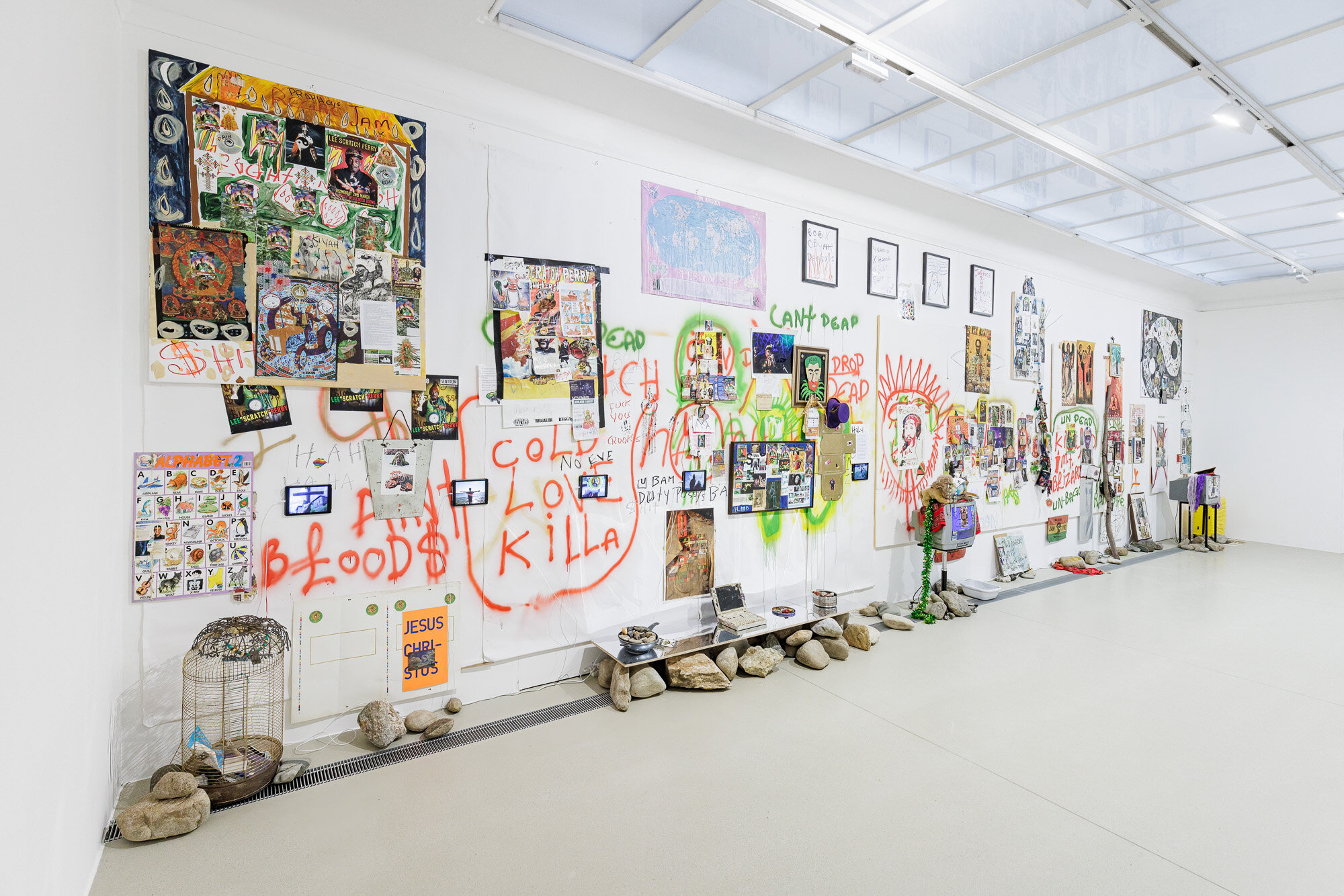
Lee Scratch Perry, 2022
Exhibition view
All works courtesy The Visual Estate of Lee Scratch Perry / suns.works, Zurich
Photo: kunst-dokumentation.com
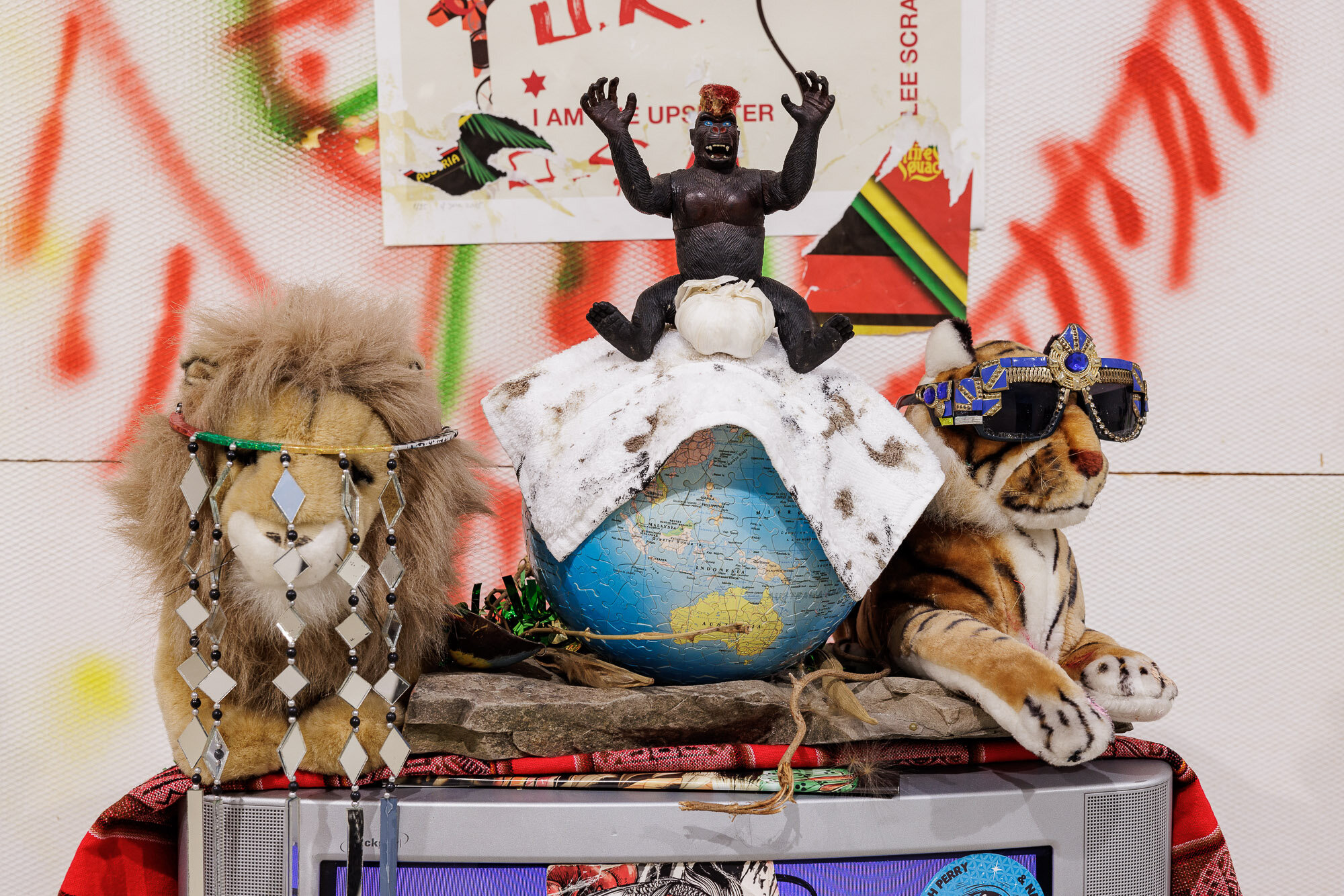
Lee Scratch Perry, 2022
Exhibition view
All works courtesy The Visual Estate of Lee Scratch Perry / suns.works, Zurich
Photo: kunst-dokumenatation.com
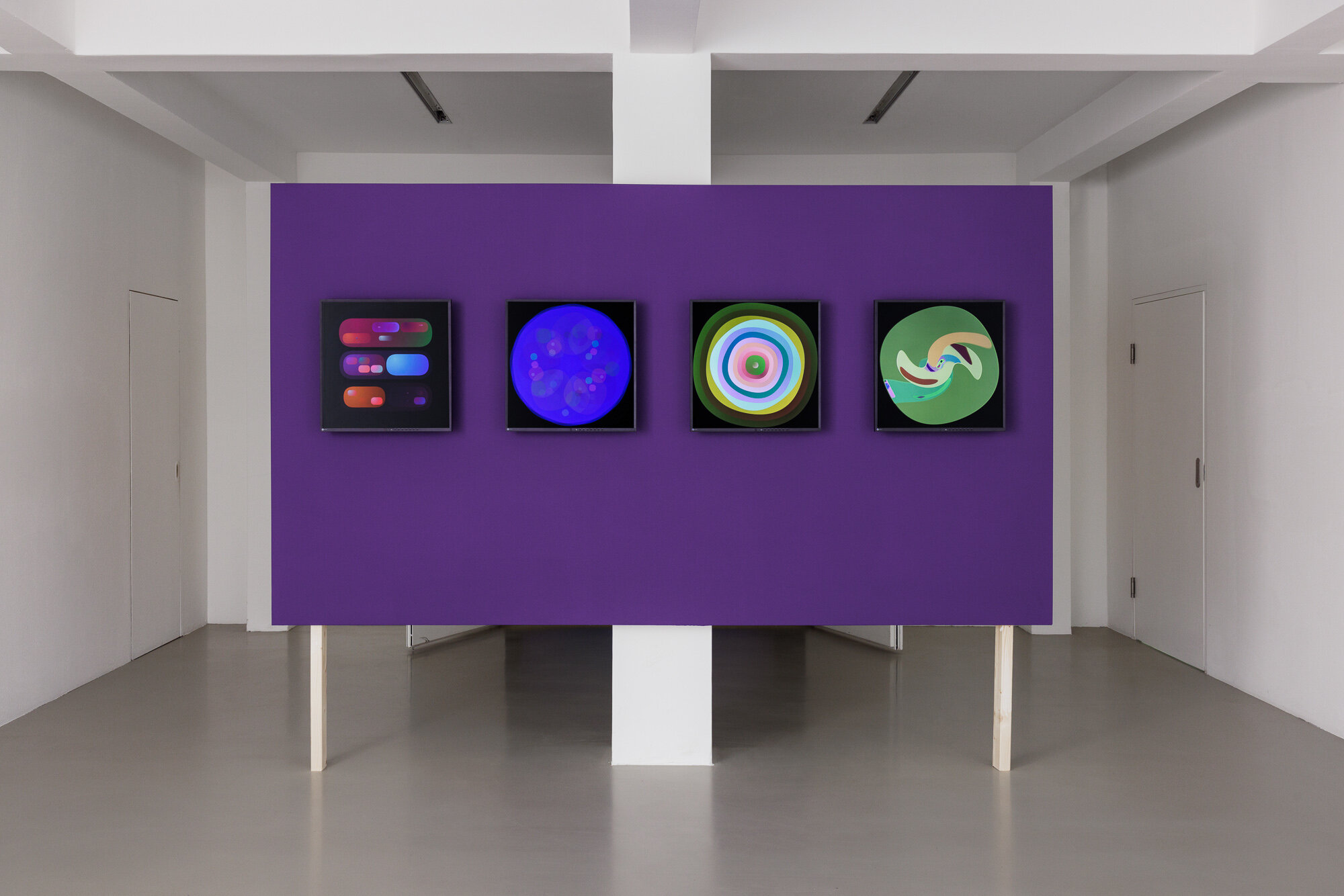
Harm van den Dorpel, Markov’s Dream, 2022
Softenon (II); Hedphelym; Orb; Keta
Four out of a series of 32 generative animations
Minted as ERC-721 NFT, on EIZO square screen
Courtesy the artist & Collection Hammerline; Collection Abosch; Collection Akkerveeken; Upstream Gallery, Amsterdam
Photo: kunst-dokumentation.com
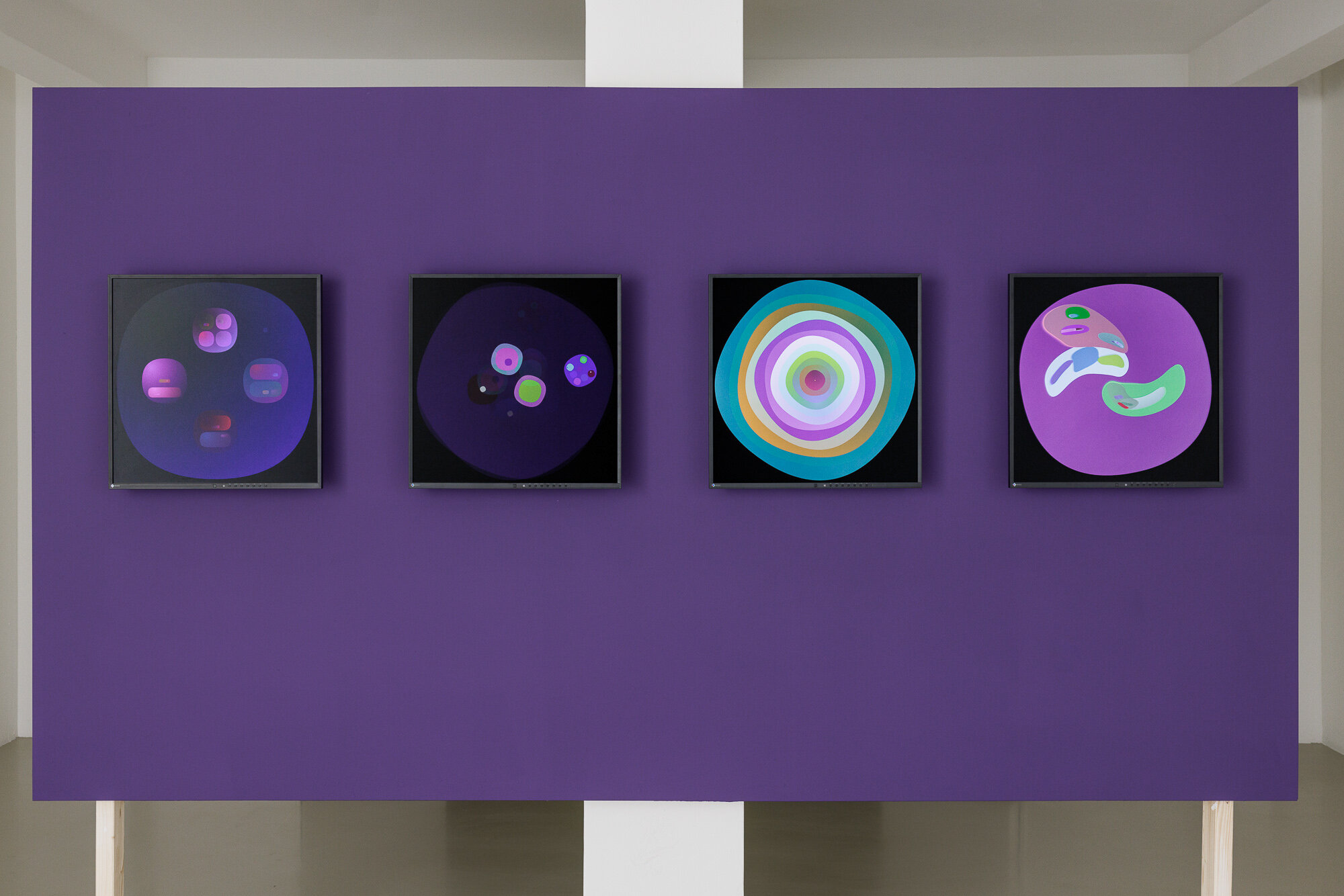
Harm van den Dorpel, Markov’s Dream, 2022
Softenon (II); Hedphelym; Orb; Keta
Four out of a series of 32 generative animations
Minted as ERC-721 NFT, on EIZO square screen
Courtesy the artist & Collection Hammerline; Collection Abosch; Collection Akkerveeken; Upstream Gallery, Amsterdam
Photo: kunst-dokumentation.com
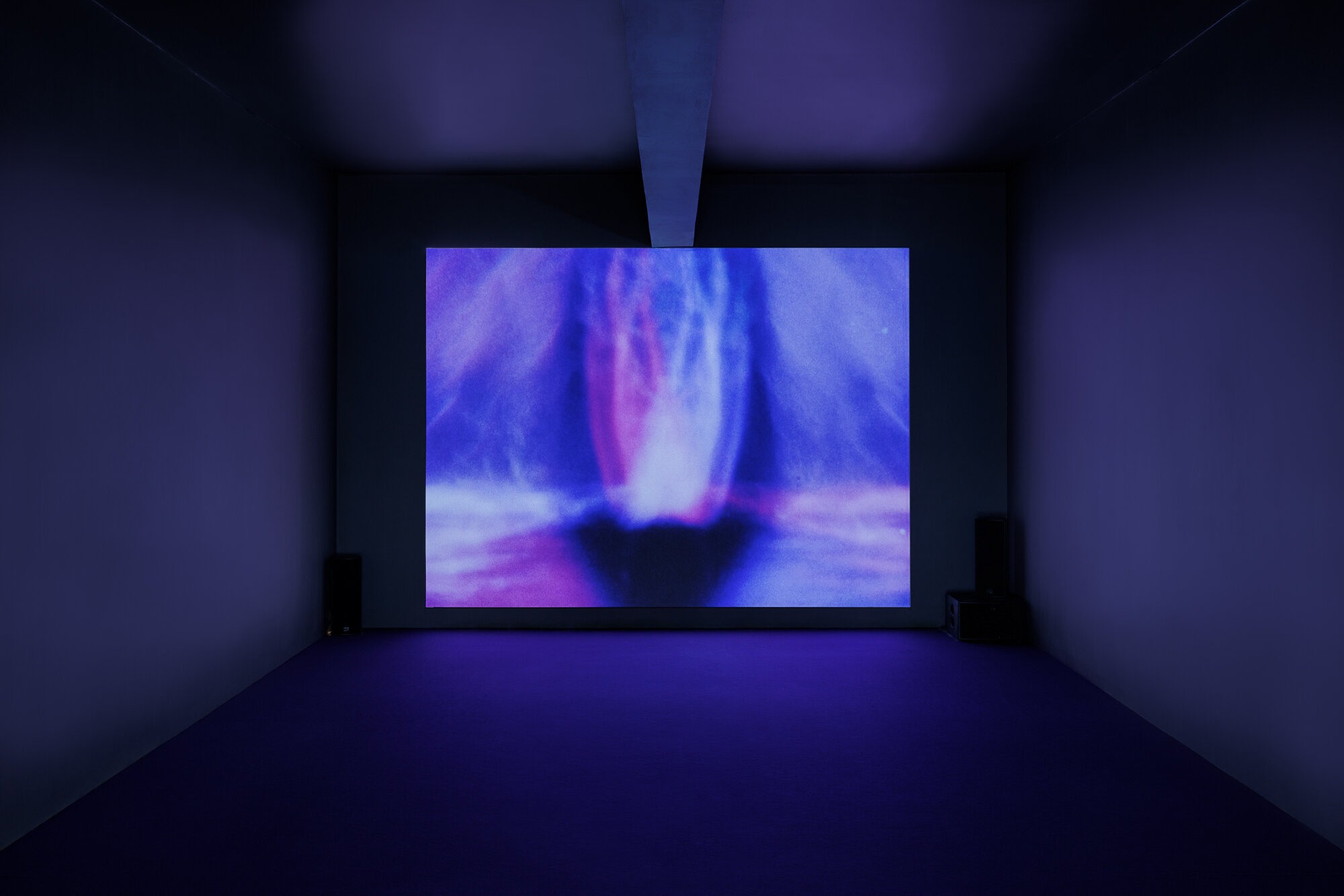
Jordan Belson, Chakra, 1972
16mm film, transferred to HD video
Filmstill, 5:23 min.
Restored and courtesy Center for Visual Music, Los Angeles
Photo: kunst-dokumentation.com
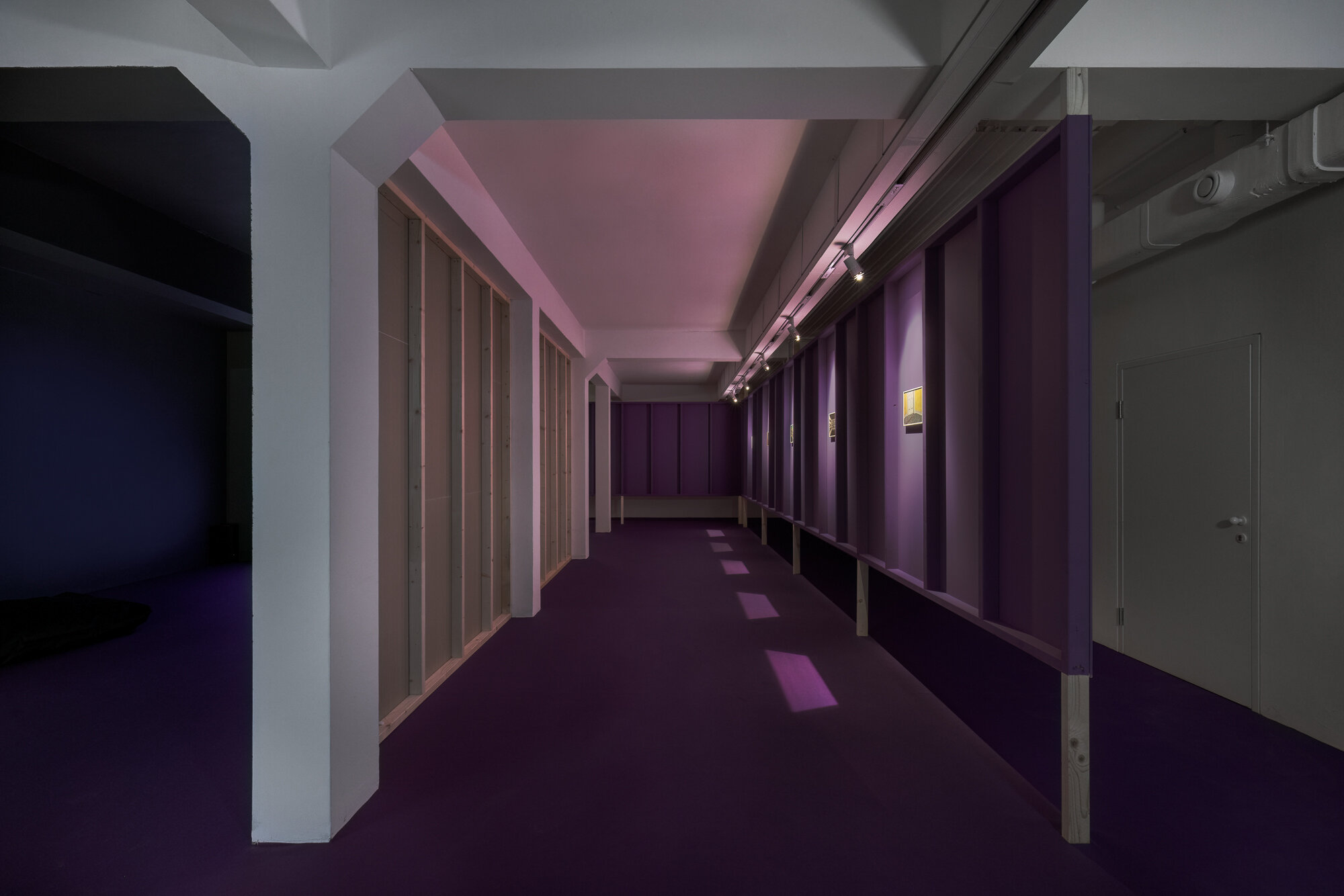
Systems of Belief, 2022
Exhibition view
Photo: kunst-dokumentation.com
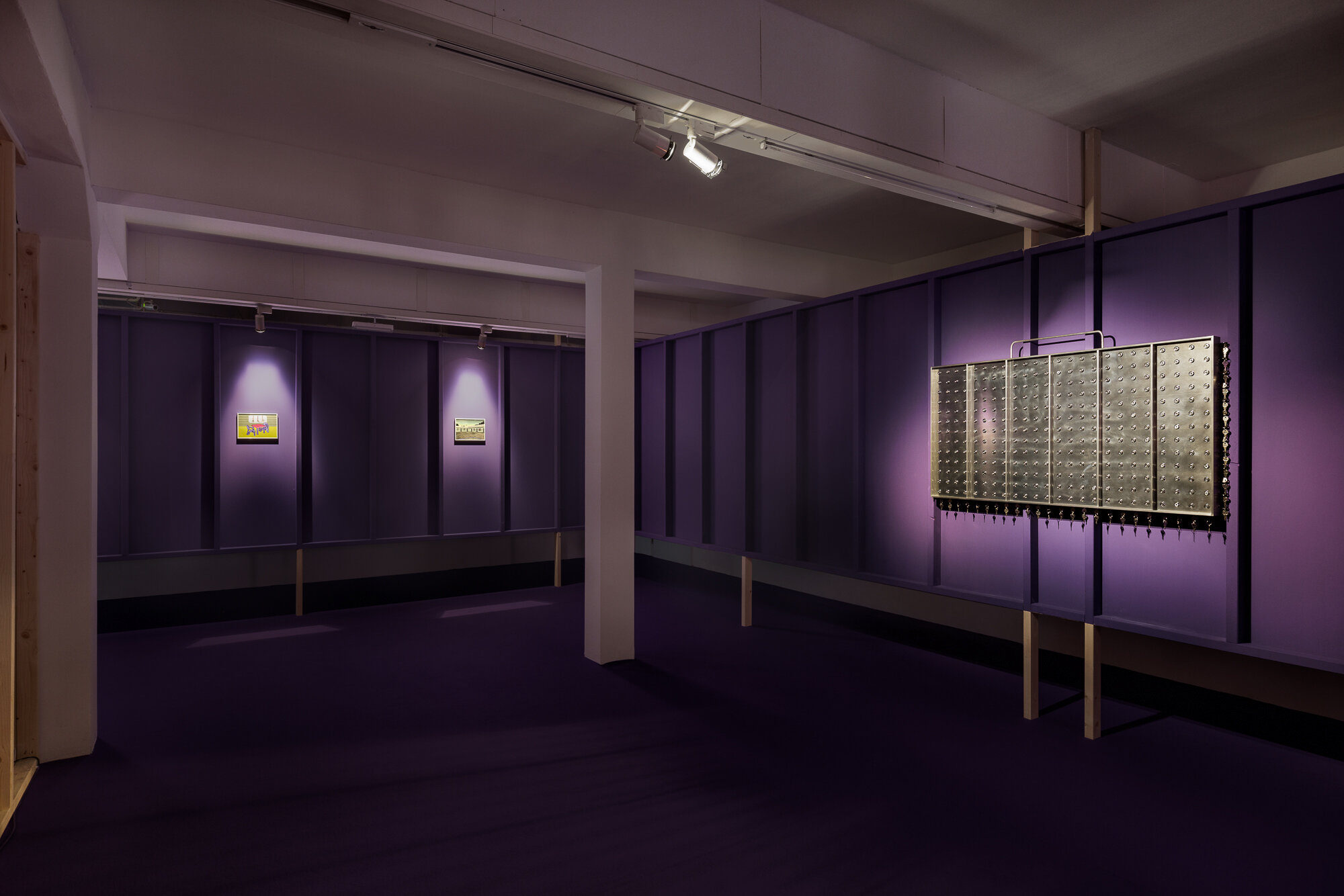
Systems of Belief, 2022
Exhibition view
Photo: kunst-dokumentation.com
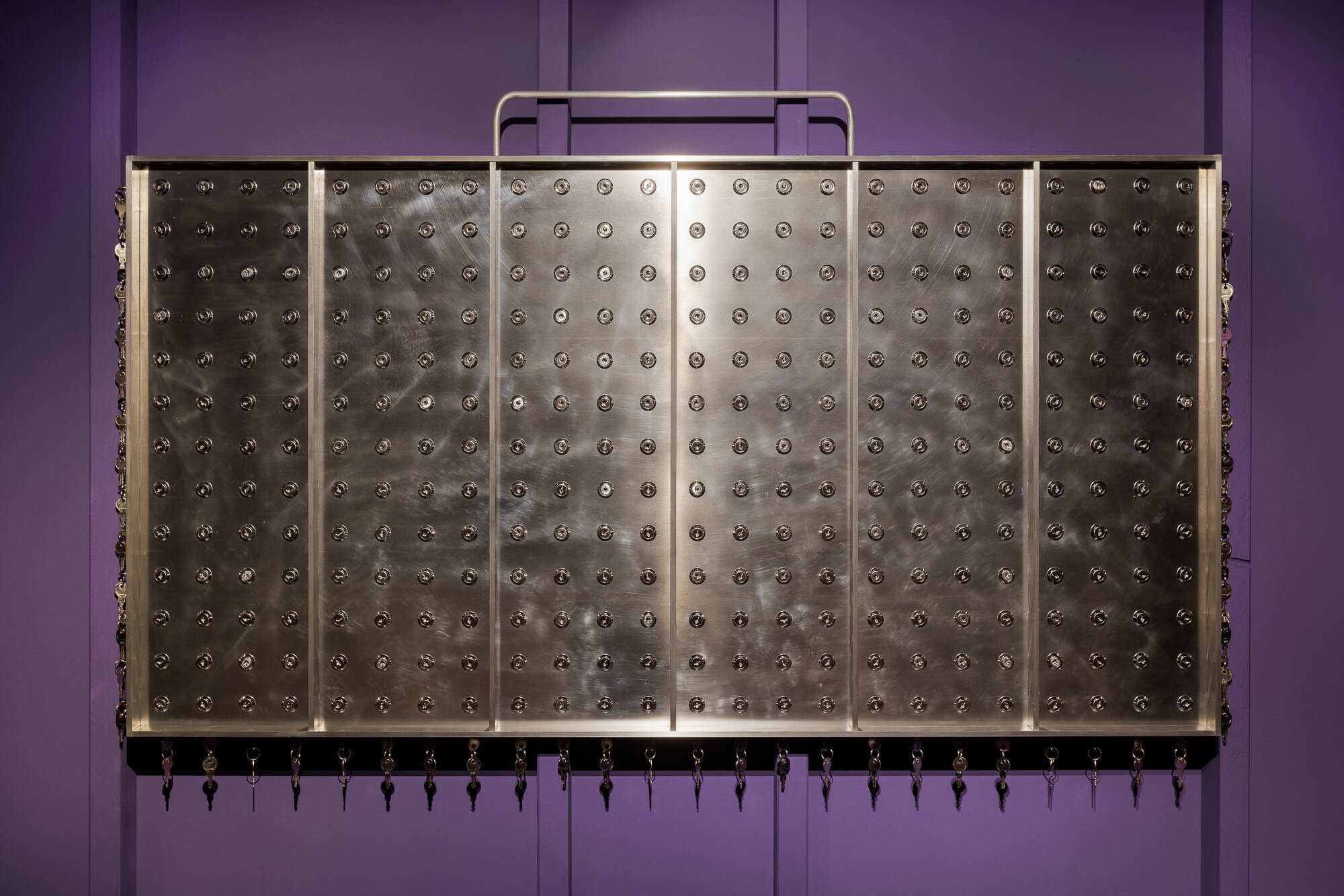
Irina Lotarevich, Housing Anxiety 6, 2022
Aluminum, locks, keys, stainless steel screws
96,8 × 150,3 × 7 cm
Courtesy the artist
Photo: kunst-dokumentation.com
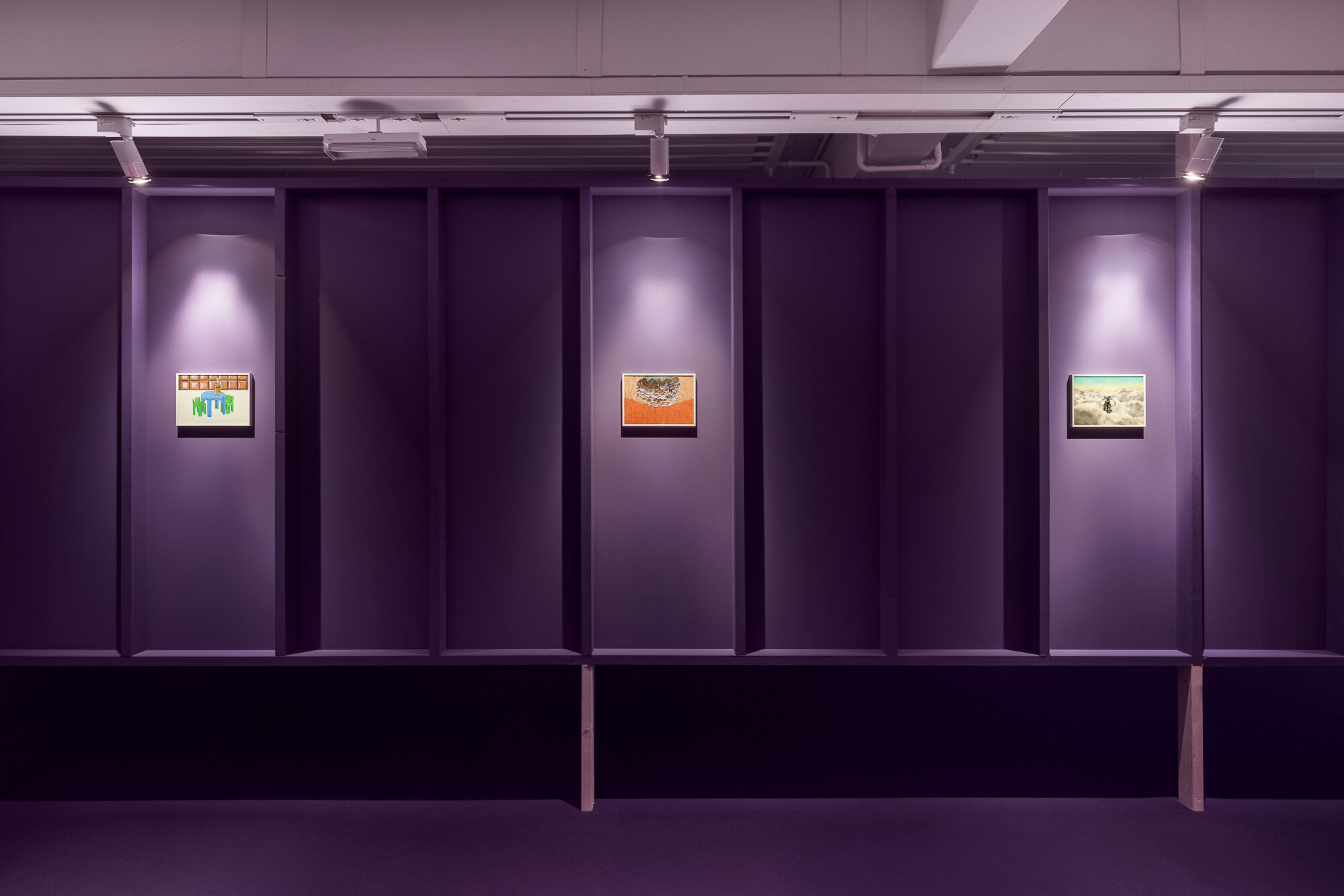
Systems of Belief, 2022
Exhibition view
Photo: kunst-dokumentation.com
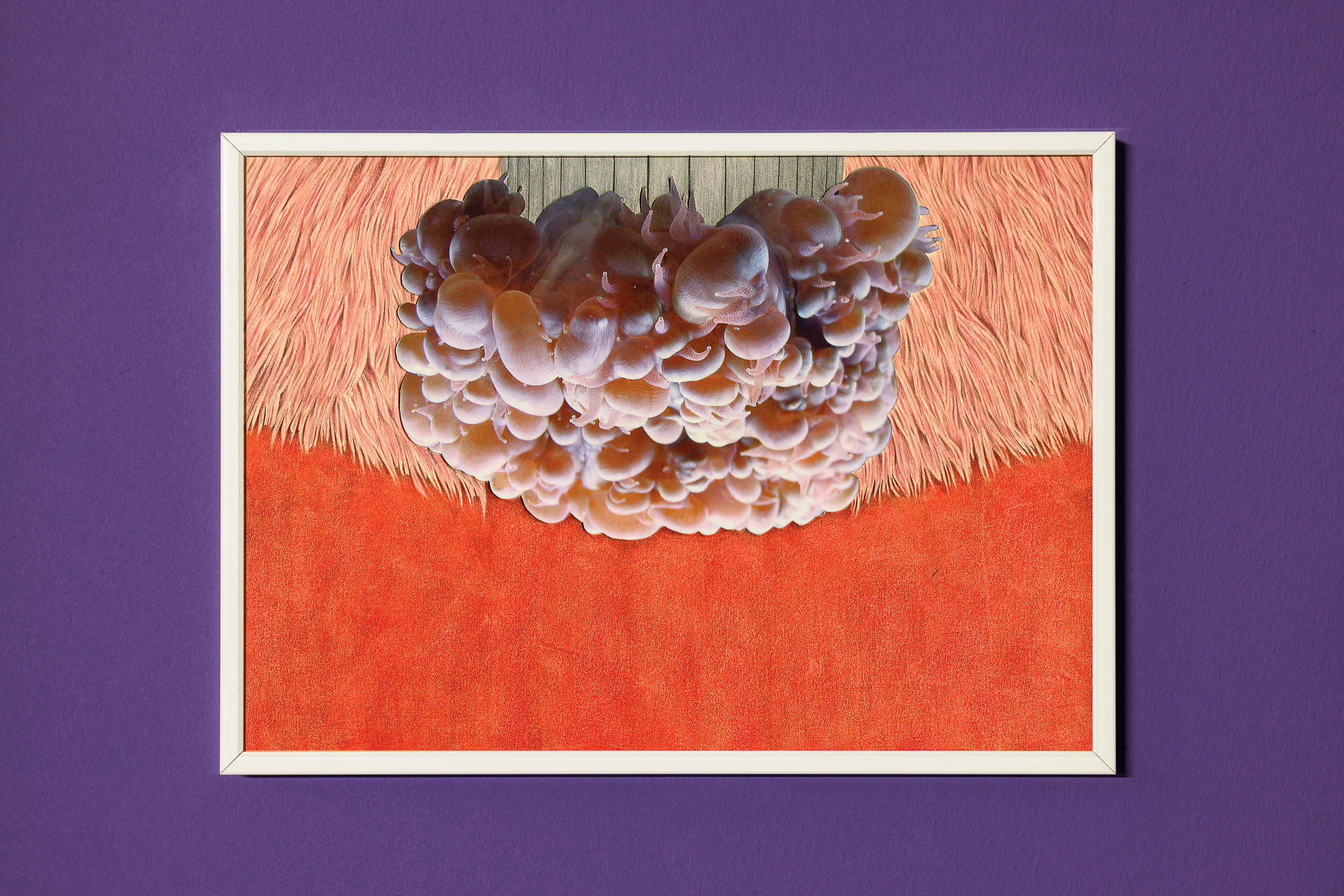
Marta Riniker-Radich, Little Shop of Horrors, 2011
Colored pencil on paper
21 x 29, 7 cm
Courtesy M3 collection, Geneva
Photo: kunst-dokumentation.com

Marta Riniker-Radich, A Sidekick Named Snake, 2018
Colored pencil on paper
21 x 29, 7 cm
Courtesy M3 collection, Geneva
Photo: kunst-dokumentation.com
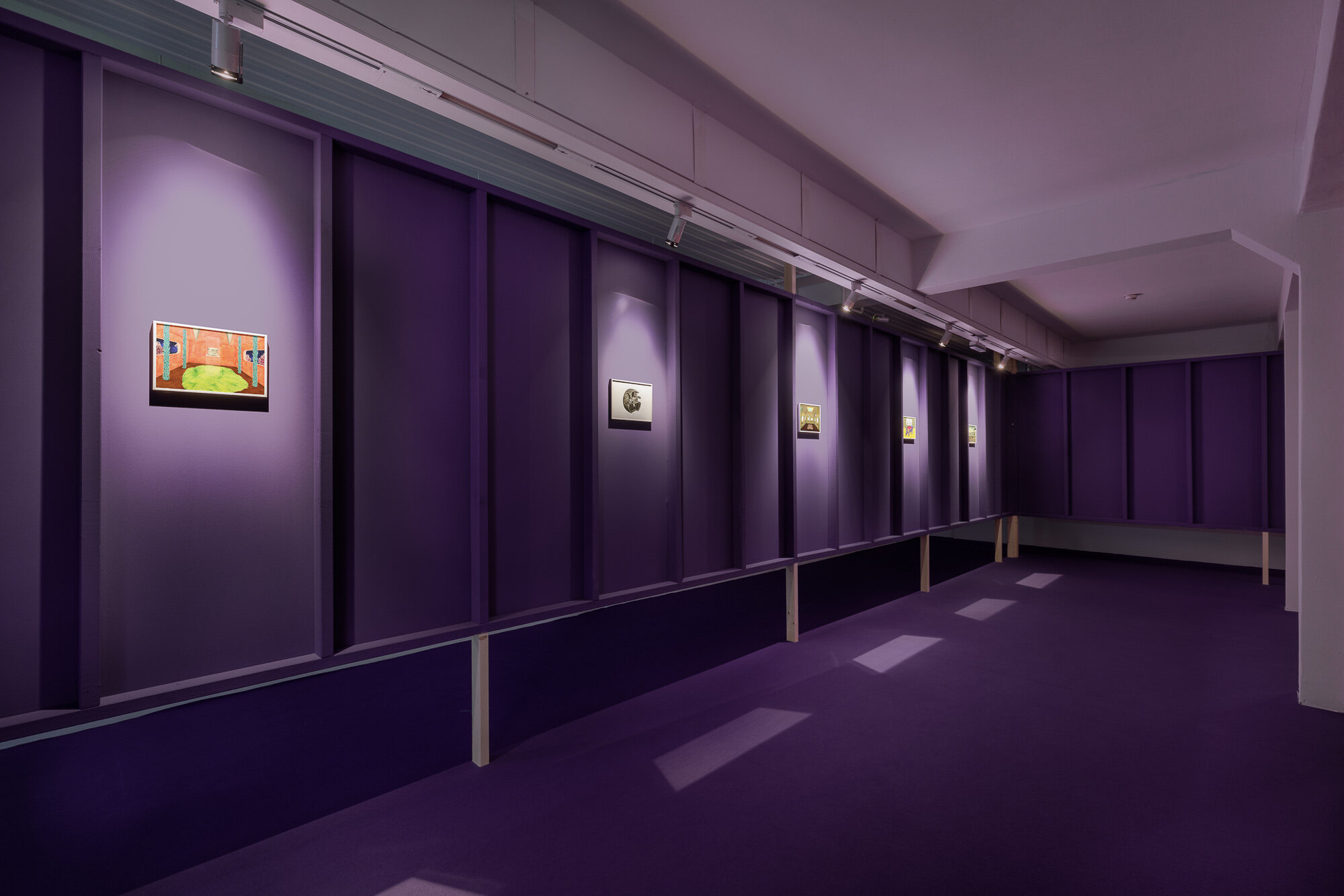
Systems of Belief, 2022
Exhibition view
Photo: kunst-dokumenation.com
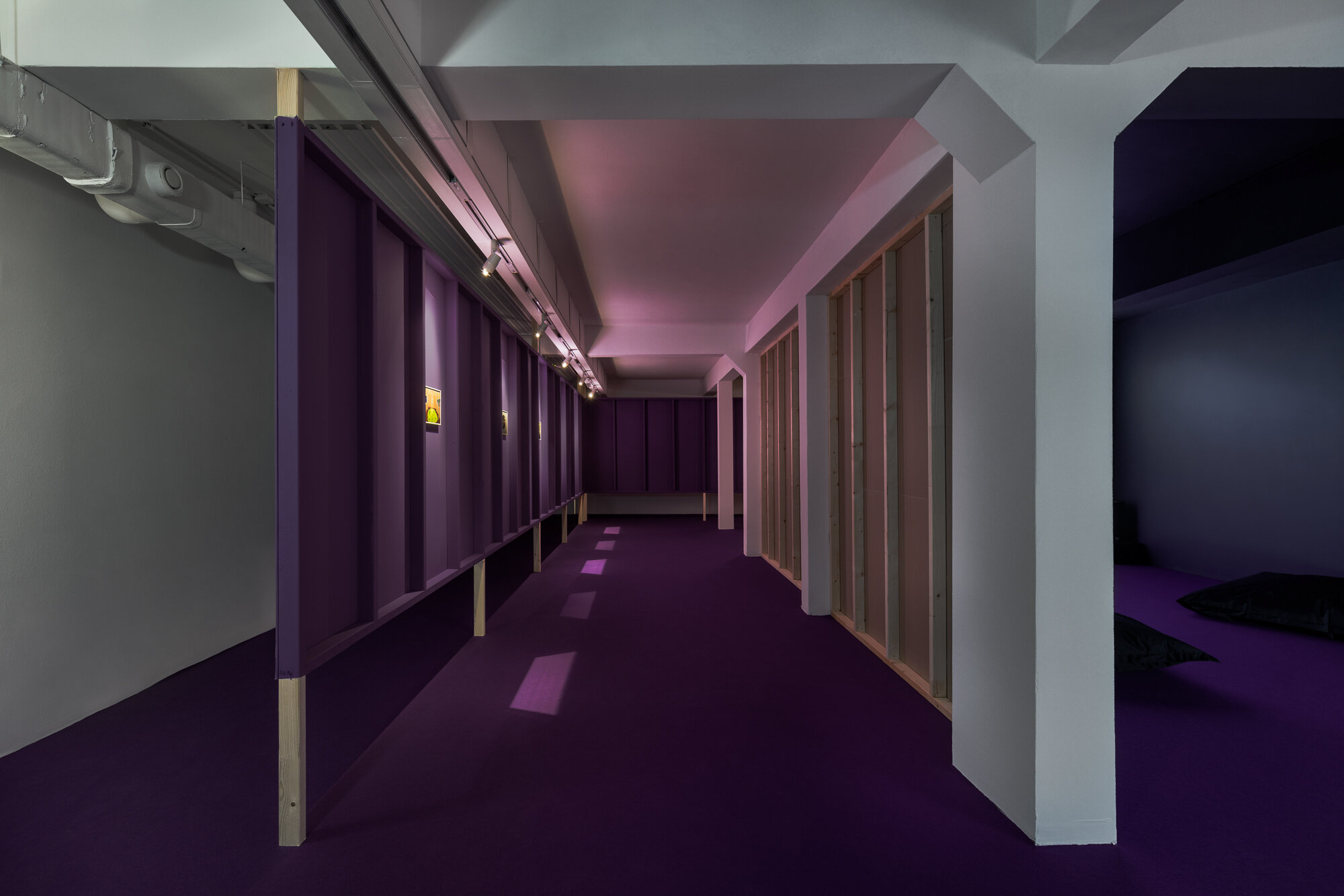
Systems of Belief, 2022
Exhibition view
Photo: kunst-dokumentation.com
Text
The large-scale group exhibition Systems of Belief brings together artistic positions that explore alternative belief systems. In a world in which political and ecological states of emergency determine everyday life, constants of social life such as science, economics and politics are increasingly being put to the test in public debates. As individuals, as a society and as an entire ecosystem, we are currently facing great challenges. Challenging, even overwhelming, is often the subjective processing of the complex world events that flow into us through various streams of information and shape our view of the present.
In our everyday life in general and also in the context of the exhibition, technology is increasingly becoming a mediator between a factual external world and its perception and processing. It influences not only how and what we see on our computer and cell phone displays, but also our being and our constitution. With almost limitless power, anonymized and algorithmized sources of communication often seem to have an impact on our perception. Their technological and digital structures and systems are expressions of technocratic mechanisms that shape our public sphere: evidence-based information and analysis techniques, meticulous organizational plans and smooth processes drive our political and social apparatuses that are barely tangible but omnipresent. In this depersonalizing and metaphysical sphere of technological processes, any form of irrational action within those apparatuses seems impossible. The exhibition Systems of Belief takes this supposed space of the impossible as its point of departure and, through the perspectives of different generations of artists, attempts to penetrate worlds in which technology is not used for the purpose of conformist regulations, but becomes a generator of disorder, an expression of unorthodox dogmas and spiritual self-knowledge and self-realization.
Systems of Belief conceives of technology as a system of automated processes and mechanisms designed to create interdependent solutions to problems. As described above, this meaning of the term has come to its full development in a technocratic society. Less thought of as a network, however, technology also means the development of different tools for shaping different production and design processes. On the one hand, the exhibition brings together positions that create their own transdisciplinary worlds by examining the logic and aesthetics of systems of knowledge and meaning, such as diagrams, cartographic schemes and religious charts. On the other hand, works are shown that made use of new technological processes and products at the time of their creation. For example, analogue animation techniques or Super 8 film cameras make it possible to work with color and light effects that allow for an expanded visual spectrum that enables the representation of a physical or psychological transcendence.
Based on the works of experimental filmmaker Jordan Belson (1926−2011), artist and architect Paul Laffoley’s (1935−2015), poet and underground filmmaker Storm de Hirsch (1912−2000), musician and artist Lee Scratch Perry (1936 – 2021), Systems of Belief looks at artists who developed their practices under the auspices of different origins and social influences. As disparate as their works appear, however, they are united by their transdisciplinary and often self-taught approach to art production as well as their work in subcultural contexts that were only sporadically docked to established currents. For example, Laffoley, who was in contact with Andy Warhol and Friedrich Kiesler, among others, was considered almost exclusively an “outsider artist” throughout his life. The filmmaker Storm de Hirsch, is considered one of the key figures of the New York avant-garde scene of the 1960s. She made her first film in the early 1960s and soon became active in the New York underground film movement, collaborating with filmmakers such as Stan Brakhage, Jonas Mekas, Shirley Clarke and others. Jamaican musician and artist Lee Scratch Perry, who died last year, is best known as a record producer and singer. From the 1990s, he also became more known for his visual practice, which, like his music, consists of “sampling” and interweaving. His installations include everything from paintings to religious objects, clothing and a whole host of other things often associated with Pan Africanism and the Rastafarian religion.
In dialog with these artistic positions, the exhibition also presents works by the Graz-based artists Richard Kriesche and Antonia De La Luz Kašik, amongst others. Kriesche is considered an Austrian pioneer of media art. In his work, the artist deals with the profound changes of computerization and digitalization. The often elusive spaces created by these technologies become the starting point in his work to develop mental spaces that deal with communication and information. His works often bear utopian traits in that they transcend the boundaries of logic and convention in order to unfold visionary ideas. Kašik shows a new production that is created in the course of the Panther Residency, a grant for a young local position. In the filmmaker’s work, the camera plays a central role as an apparatus. Through it, different visual worlds are connected or moved into one another. To this end, she explores the technical possibilities of analog cameras and film material. Following on from existing works, the artist is developing a new film for participation in the exhibition, which moves at the boundaries of the medium.
Apart from these considerations, Systems of Belief also is a reflection on the system of art. The existence of some of the artists shown here on the periphery of the established art system reveals it to be an apparatus shaped by rules and dogmas that functions on the basis of mechanisms of inclusion and exclusion as well as “systemic” belonging.
Works such as those by Storm de Hirsch, Jordan Belson, Antonia De La Luz Kašik, Lee ““Scratch”” Perry, and Harm van den Dorpel demonstrate that technological means such as lenses, servers, or electronic synthesizers have had a direct or indirect impact on art production in the recent past and present. Through the constant development of various technologies and systems for the production of image and sound, for example, very elusive states of consciousness can be expressed. The artists mentioned above use technological means not to make work processes more efficient, but to express irrational and transcendent experiences that are not tied to the material value of things.
Artists such as Paul Laffoley, Marta Riniker-Radich and Irina Lotarevich are concerned with the logic or ““architecture”” of places and mechanisms that, almost like a divine power, influence all our spheres of life, such as economy, living space and communication. Laffoely’s meticulously crafted works, which draw on scientific and esoteric knowledge to find explanatory models for our existence and being, represent a good example here. Through the perspective of these different artistic positions, Systems of Belief enables a reflection on ideological or spiritual self-realization through the use and subversion of technological means.
Curated by Cathrin Mayer
Artists
Participating artists
Jordan Belson
studied painting in the 1940s, Belson turned afterwards to the medium of film and had made a total of over thirty films. In the process, he began to address various cultural, spiritual and religious frames of reference. “His varied influences include yoga, Eastern philosophies and mysticism, astronomy, Romantic classical music, alchemy, Jung, non-objective art, mandalas, and more,” wrote Cindy Keefer in 2008. His films have been shown at the Tate Modern in London; the San Francisco Museum of Modern Art; the Whitney Museum in New York; Centre Pompidou in Paris, among many others.
Harm van den Dorpel
is an artist dedicated to discovering emergent aesthetics by composing software and language, borrowing from disparate fields such as genetics and blockchain. Also, he co-founded the now closed left gallery. His work has been included in the exhibition Free at the New Museum in New York and in the survey exhibition Post-Internet Art at the Ullens Center for Contemporary Art. His works were recently shown at Takuro Someya Contemporary Art in Tokyo; Nahmad Contemporary (NY); — curated by Eleanor Cayre & Dean Kissick, Villa Schöningen, Potsdam and Galerie Rüdiger Schöttle. He’s represented by Upstream Gallery, Amsterdam; and Galerie Rüdiger Schöttle, Munich.
Storm de Hirsch
was an American poet and filmmaker. She was considered a key figure in the New York avant-garde film scene of the 1960s and was a founding member of the Filmmakers’ Cooperative which was founded in 1961 in New York City. Often overlooked by historians, in recent years she has been recognized as a pioneer of underground cinema. Much of de Hirsch’s work is abstract and uses a variety of experimental techniques, such as frame-by-frame etching on opaque black film stock and hand-painting on the film strip itself. Her films have screened at the Museum of Modern Art; the Whitney Museum of American Art; the Cannes Film Festival; and the Ann Arbor Film Festival; among others.
Antonia De La Luz Kašik
studied graphic design and visual communication at the Universidad Mayor de San Simón in Cochabamba, Bolivia and graduated from the Friedl Kubelka School for Independent Film in Vienna in 2018. She is currently studying video and video installation at the Academy of Fine Arts Vienna and working on her own artistic projects using the analog medium of film, as well as animation, drawing, printmaking and photography. As a cinematographer she works in collaboration with other artists, most recently for the performances of Eva Sommer and the feature film Beatrix by Lilith Kraxner and Milena Czernovsky.
Richard Kriesche
is an artist, art and media theorist. His artistic fields of work include photo art, video art, computer art, net art, installations, performance and multimedia art. In his works, Kriesche attempts to bridge the gap between the genetic micro-worlds and the macro-worlds of the universe. With his sculptures and installations, Kriesche has been at numerous major events such as documenta 6; the Venice Biennale; and in museums such as the Haus der Kunst; Munich, and the Chicago Art Institute. Most recently, the Museum der Moderne in Salzburg dedicated an extensive survey exhibition to him.
Paul Laffoley
Following his formal education in the classics at Brown and architectural studies at Harvard, Paul Laffoley (*1935 Cambridge, Massachusetts, †2015 Boston, Massachusetts) began to assimilate and systematically cross-pollinate his related strands of intellectual inquiry. In a search for expanded opportunities, he went to New York in 1963 to work with the visionary artist and architect Frederick Kiesler, and was also recruited to view late-night TV for Andy Warhol in exchange for a place to sleep. From this point forward, Laffoley began to formulate his unique trans-disciplinary approach to a new discipline combining philosophy, science, architecture, and spirituality to the practice of painting. By the late 1980s, Laffoley began to move from the spiritual and the intellectual, to a view of his work as an interactive, physically engaging psycho- tronic device, a modern approach to trans-disciplinary enlightenment and its spiritual aura. Laffoley’s writings as well as works of art were published in May 2016 by the University of Chicago Press in a new book entitled The Essential Paul Laffoley. His works have been shown at the Palais de Tokyo, Paris; the Hamburger Bahnhof — Museum für Gegenwartskunst, Berlin; and the Hayward Gallery, London; among others.
Irina Lotarevich
studied at Cornell University, Hunter College and the Academy of Fine Arts Vienna. The artist’s sculptural practice is characterized by the intersection of her own subjective experience with larger systems. She works with wood, metal, and casting techniques, often combining both high-grade and low-grade or devalued materials with sophisticated fabrication techniques and a sensitivity to building spatial narratives. Lotarevich also weaves her own writing and use of language into her work. The minimal yet complex and specific forms of her sculptures reference architecture, bureaucracy, labor, and parts of her body. Her recent solo and duo exhibitions include: Refinery, SOPHIE TAPPEINER, Vienna (2020); Galvanic Couple, FUTURA Centre for Contemporary Art, Prague (2019). Her work has recently been featured in the following group exhibitions: Salzburger Kunstverein, Salzburg; Kunstverein Bielefeld, Bielefeld; MAK Biennale for Change, Museum of Applied Arts, Vienna; Metal Machine Music, Lisbon; Louis Reed, New York City; Loggia, Vienna, among others.
Lee Scratch Perry
was one of the most influential figures in the development of reggae and dub music in Jamaica. His later music is a far cry from his reggae days; many saw this period of Perry’s career more as performance art in more ways than one. In the late 1990s, Perry was also recognized and perceived as a visual artist. Perry’s multidisciplinary practice encompasses his entire body and physical environment, and features a unique blend of religious and symbolic belief systems. In recent years, his work has been increasingly received in the art field and has been exhibited at MACRO – Museum of Contemporary Art in Rome (2022); and the 34th Sao Paulo Biennale (2021), among others.
Marta Riniker-Radich
After graduating from HEAD in Geneva in 2008, Marta Riniker-Radich began to develop her painting practice using simpler methods. Her work often focuses on historical figures and cultural events and may also include other media forms such as texts and objects as well as site-specific installa- tions. She has participated in many artist’s residencies in recent years, including Studio Roma, Landis & Gyr Foundation, and Fieldwork Marfa. Marta Riniker-Radich was awarded the Swiss Art Award in 2010 and the Manor Art Prize in 2016. Her works have been shown at Instito Svizzero in Milan (2021), Éclair in Berlin, Kunsthaus Glarus (both 2018), and Kunsthaus Lagenthal (2013), among others. She is represented by the Francesca Pia Gallery in Zurich.
Reviews
- profil, "Das Bewusstsein ist ausbaufähig", Stefan Grissemann Print, 25.9.2022, PDF (1 MB)
- Kleine Zeitung, "Reisen durch Raum und Zeit", Wenzel Mraček Print, 30.9.2022, PDF (1 MB)
- Spanish channel, RTVE (Metrópolis), "Systems of Belief", with steirischerherbst, 2022 Online
- Damn magazine, "Tech, Drugs, Same, Same", Iona Lowe Print, PDF (281 KB)
- Berlin Art Link, "The Anxiety of Art: ‘Systems of Belief’ at Halle für Kunst", Dagmara Genda Online, 19.12.2022
- Contemporary Art Library, Los Angeles Online
Press
Downloads & Dates
- Invitation card Systems of Belief PDF (805 KB)
- Pressetext Systems of Belief PDF (127 KB)
- Press text Systems of Belief PDF (89 KB)
Partners
This exhibition is supported by
